HIFIMAN Goldenwave Serenade – Himalaya PRO R2R DAC AMP
HIFIMAN Goldenwave Serenade is a $999 USD DAC and Headphone Amplifier, with a Himalaya PRO R2R DAC inside, with a new FPGA algorithm and 0.01% precision resistors, and with a THD rate of -6 dB, 0.0012%. Today we will review it and compare it to Dethonray Listening M1 (2599 USD), HIFIMAN EF600 (799 USD), FiiO K9 PRO ESS (849 USD), Keces S3 (1300 USD), and Aune S9C PRO (699 USD).
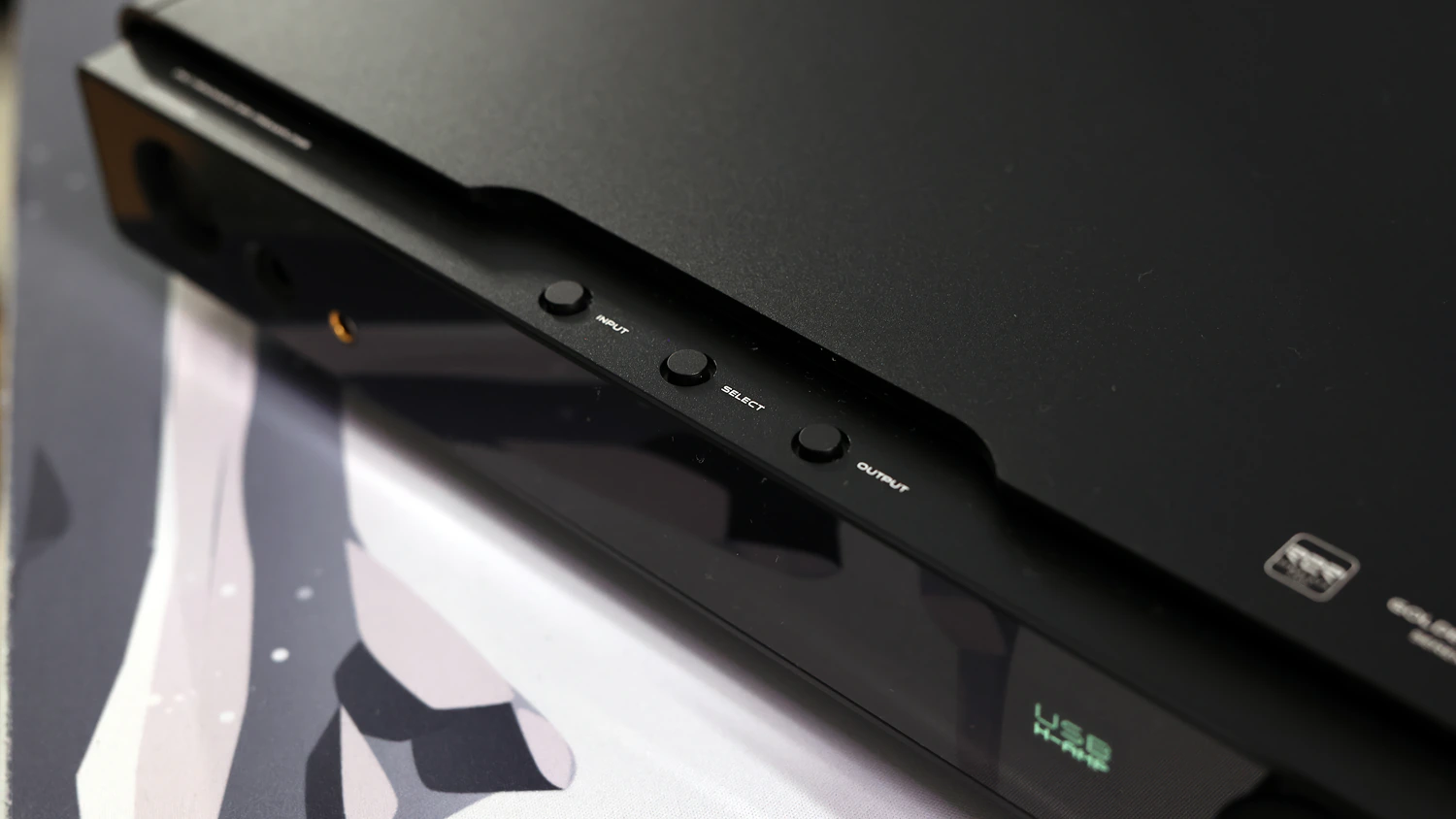
Introduction
HIFIMAN recently acquired Golden Wave, and now they have the means to produce even better high-end flagship DAC/AMPs and electronics, as well as new insight on how to make those prettier and sleeker looking. The Serenade is a really complete DAC/AMP which will be able to do anything you need it to, including powering headphones, offering two line outs for a stereo system, volume control, hi-res decoding, and so much more, through its internal R2R DAC. As an Amazon Influencer, I earn from qualifying purchases, and using the purchase links in my reviews helps me maintain this website and Youtube Channel. I thank HIFIMAN for providing the sample for this review, in exchange for my honest opinion.
PROs – Excellent build quality, superb sonic performance, extreme price / performance ratio, multiple inputs, multiple high-end outputs, XLR Balanced outputs both for the line out and headphone output, 4.4mm Headphone Output, Very dynamic, music and engaging sound, can drive both headphones and IEMS with minimal noise, powerful and solid toroidal transformer inside, Wide and holographic soundstage, precise instrument separation, excellent dynamics and impact.
Cons – Can get a bit warm during usage, There is a quiet background noise with IEMs if no music is playing.
Product Link
You can grab one here – https://amzn.to/3XkgZBB
Build Quality/Aesthetics
Looking at it upfront, Serenade is a beautiful DAC/AMP with a strong and bold metallic chassis, and a beautiful glass front, a small and retro-looking display, with a large analog volume knob on the right side, and three headphone outputs on the left side. The unit is compact, thin, wide and somewhat long, with a high weight of 3.9 KG, feeling incredibly solid and well made. There are three buttons on the upper side, to give you control to basic settings, such as selecting the current input, current output, and a brightness setting, and standby setting. The heart of the Amplifier part is served by the Legendary FET operational amplifier, with a discrete component LPF analog circuit which translates to a high-precision and low-noise sound. Coupling capacitors have been eliminated from the signal path, removing nonlinear distortions caused by electrolytic capacitors, leaving only the full range, pure output of the amplifier.
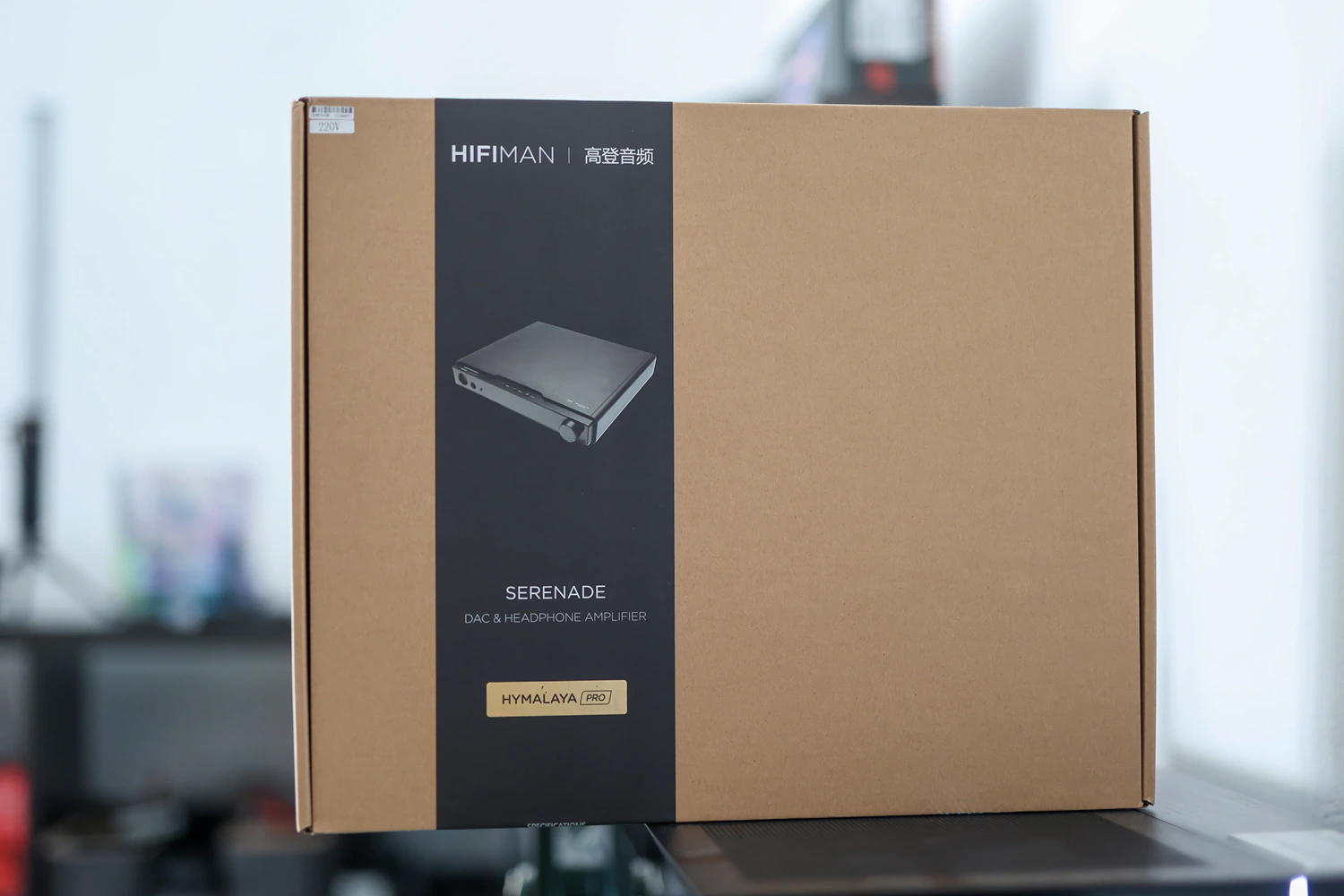
The DAC at the heart of the Serenade is a HYMALAYA PRO, HIFIMAN’s own special sauce for powering their DACs with R2R Tech. This has support for a new FPGA PRocessor, with a 0.01% precision transistor, the performance surpassing the PCM1704 in every way. Reaching a THD of -6dB 0.0012%, the new R2R DAC should offer a much better precision for the DAC output. To power the DAC and the headphone AMP, we have an Oxygen-Free Copper Wire Wound Around Toroidal Transformer, which is quite great, and a big reason the unit weighs 3.9 Kg.
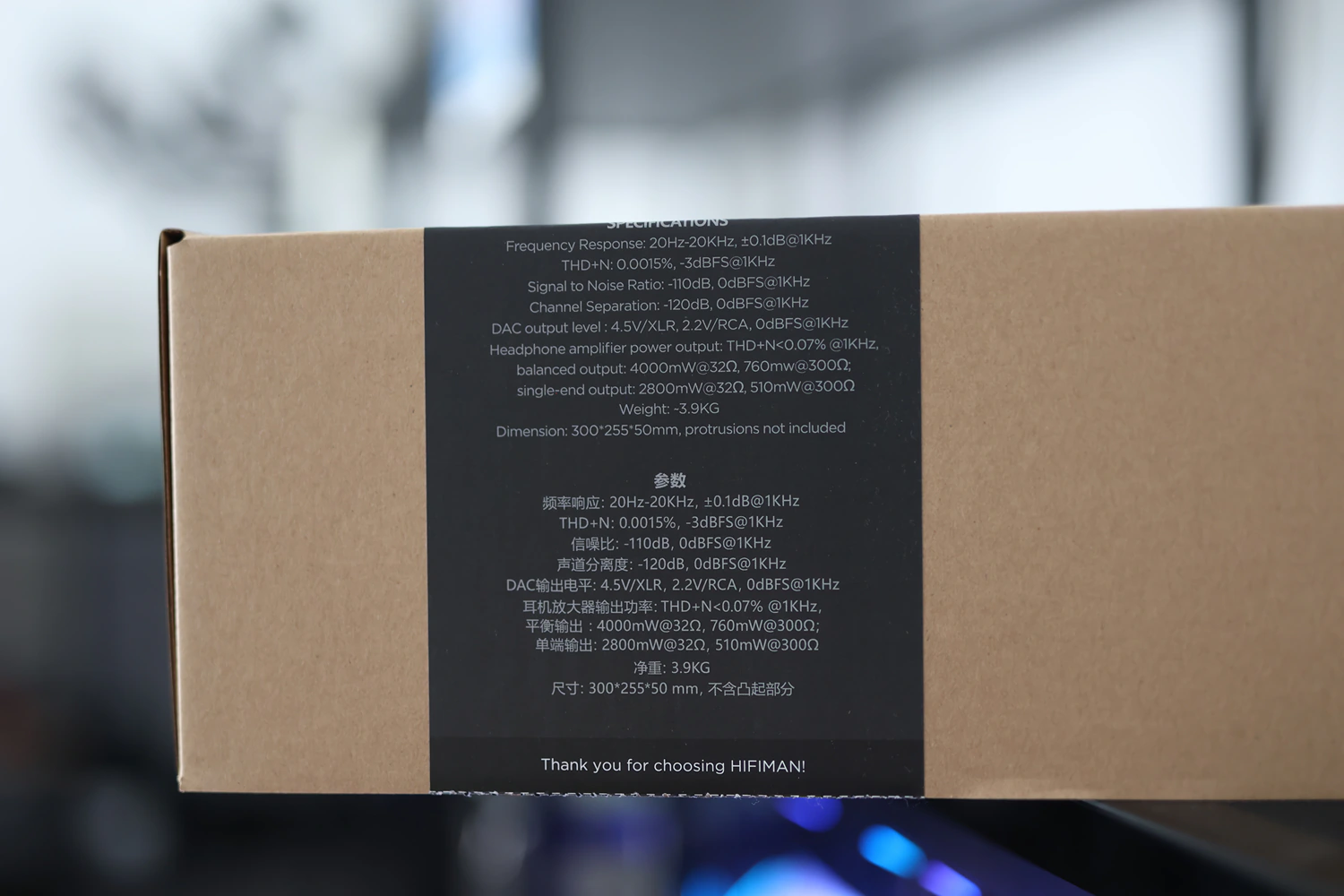
With the acquisition of Golden Wave, HIFIMAN added XLR Balanced Outputs, RCA Single Ended Headphone Outputs, but a wide selection of inputs, including Coaxial, Optical, Network and USB inputs. If you have a DAC you want to stick to, Serenade allows you to have an Analog input too. There is an OS upgrade microSD slot, but so far there have not been any huge firmware upgrades, as Serenade is working perfectly and I found no bugs during usage. The Class A Headphone Amplifier inside has a fully discrete transistor amplifier circuit, inheriting the noble tone of the Prelude AMP, which costs no less than $2499 USD, while Serenade costs just $999 USD
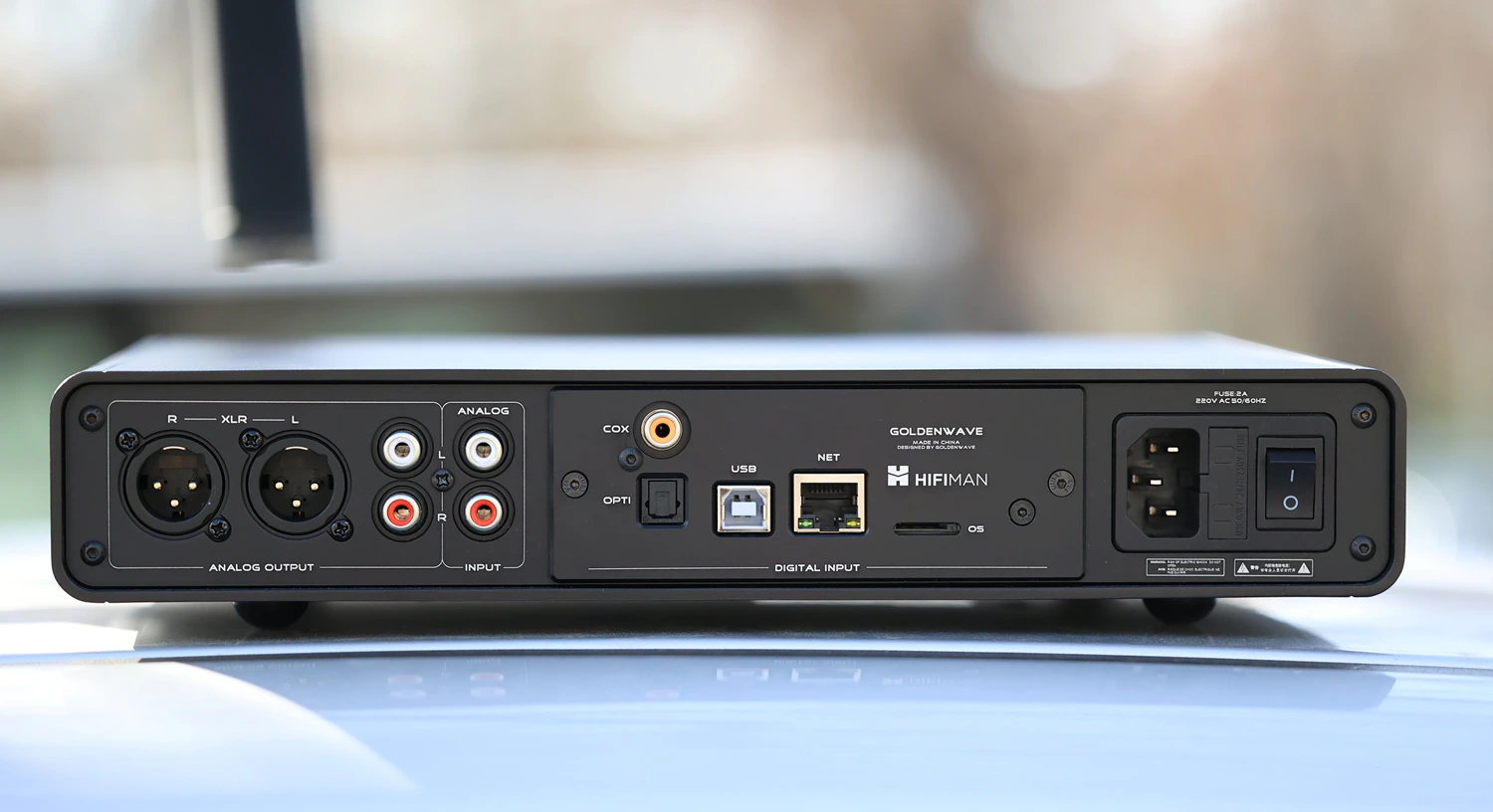
The Digital input format support list includes PCM up to 32 Bit / 384 kHz, and DSD up to DSD256 for the USB input. The Coaxial and Optical inputs allow for PCM signals up to 32 Bit / 192 kHz, and DSD up to DoP64. The LAN Wired Network allows for PCM up to 768kHz, and DSD up to DSD512. The network input will mostly be used for Streaming, so the streaming service should also have this kind of resolution for files in their library, and my main source right now is Tidal, as they have the best file collection to Quality to Price ratio.
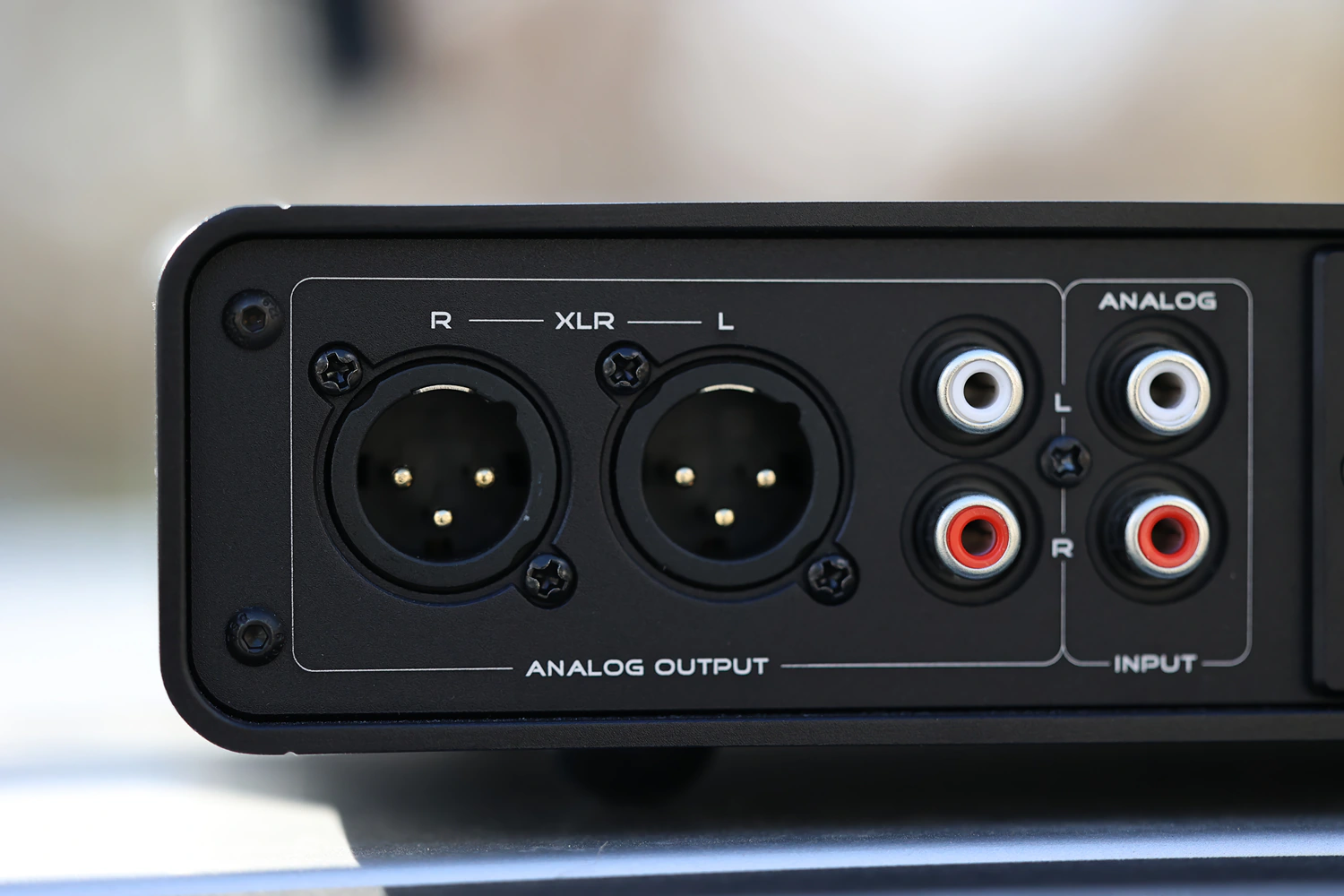
As Serenade is a high-end DAC/AMP, mostly aimed at desktop users with a rich headphone collection, it comes with exceedingly high driving power, having a Class A Headphone Amplifier Circuit at the core, paired with a Himalaya PRO R2R DAC. The balanced output can push up to 4000mW for a 32 OHM impedance, which translates to roughly 4 Watts of power, enough to drive ultra sensitive speakers. For a high impedance of 300 OHMs, Serenade can push up to 760mW of power, which is insane. The Single Ended headphone output is still excellent, and Serenade can power them with up to 2800mW of power for a 32 OHM impedance, and there is minimal loss in quality compared to the balanced output. The 300 OHM impedance power output for the single ended output is also excellent at 510mW, which is much higher than I would’ve expected, it basically still has more than enough even if you’re using a single ended cable and headphone.
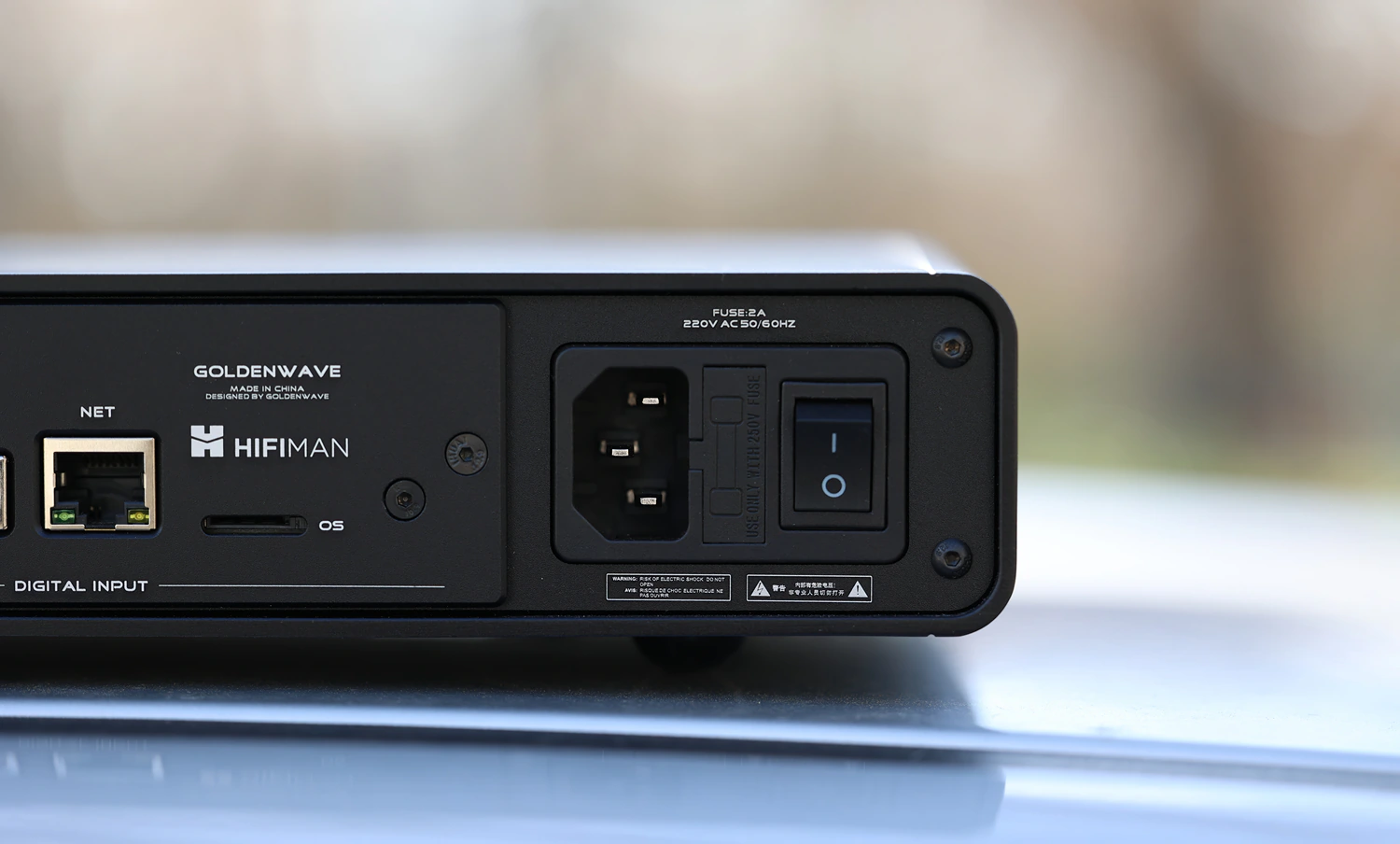
We have a low THD of THD+N <0.07% for the headphone amplifier, and the DAC output has 4.5V for the XLR output, and 2.2V for the RCA output. This all has a Channel Separation of -120dB, and a SNR of -110 dB, with a total THD+N of 0.0015%. Naturally, the frequency response when measured on an oscillometer is 20 Hz – 20 kHz with a deviation of 0.1dB. The Toroidal transformer helps a lot with keeping the THD low, as it has 50W total power, has a full iron core, and a large pond filter with nearly 30.000 microfarads. To top it all, Serenade has a multi-stage, multi-channel, low-noise, high-speed voltage regulator circuit, providing a pure and fast power supply for the serenade. The best part of it all is the fact that there is a fuse at the back, so the whole device won’t be toast in case there’s lightning striking your home or any kind of short circuit on your electrical web.
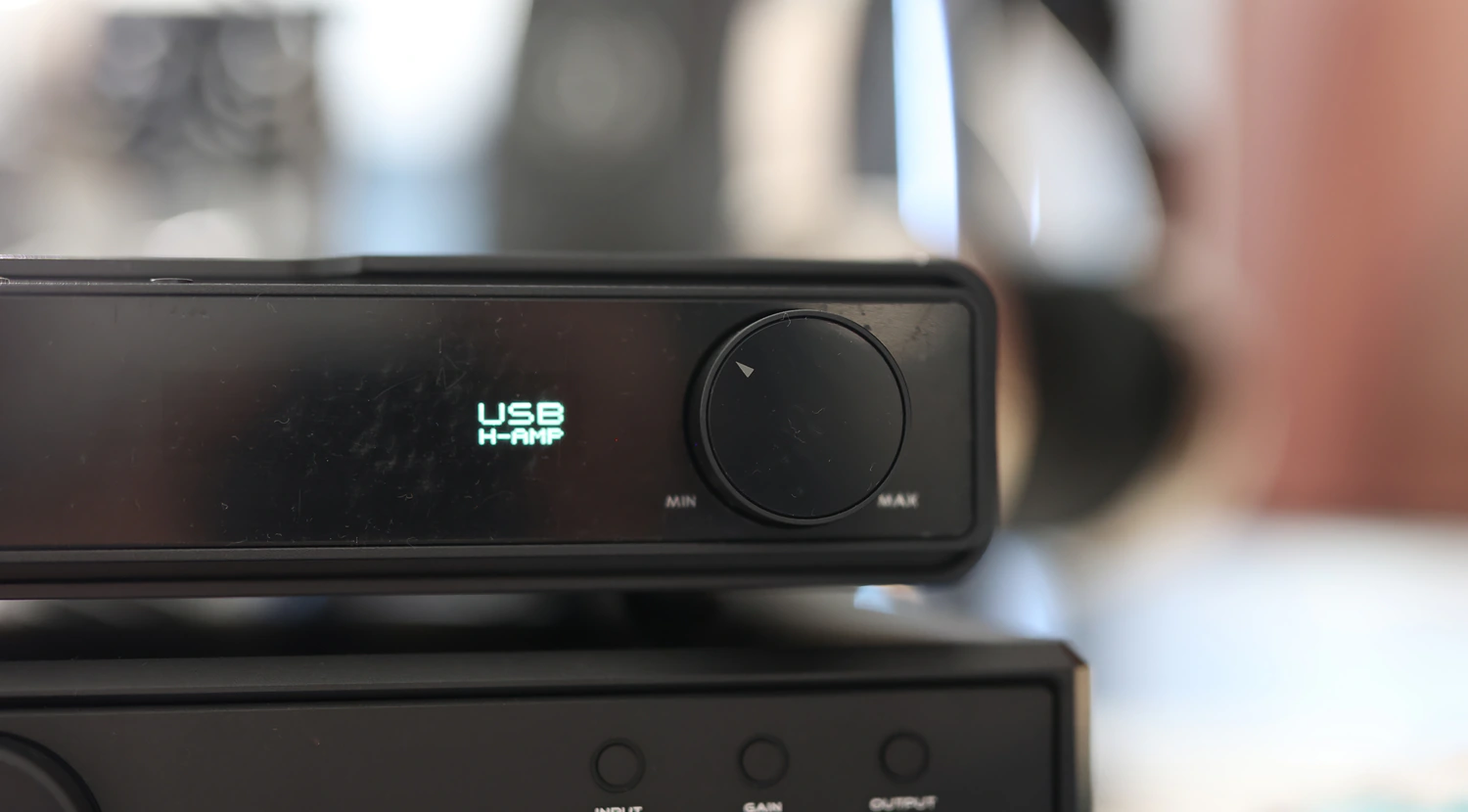
To use one of the outputs of the Serenade, you have to select it, as there is a special Selector, and you can cycle through outputs using the button on the front, allowing you to get Headphone DAC/AMP Mode, Preamp mode (DAC with Variable volume), or DAC mode, which sets the DAC volume to -0 dB or 100%. Because you cycle through outputs, when you reach DAC, if music is playing, it will push sound at 100% volume, so be sure to pause while cycling through the outputs. If using it as a DAC / PREamp for a stereo system, there is a pop on turn on and on turn off, which moves the speaker driver. As the volume is fully analogic, the DAC mode just bypasses the controller and routes the sound straight to the Line Outs. You cannot use two of the outputs at the same time, so when you route the sound to the headphone amplifier part, it won’t play in your speakers at the same time, which I think is ideal. While using the Serenade, it can get a bit warm during usage, but not very much so, and I would classify it as safe to have the Prelude on top of it, without affecting the operation of either.
USB DAC
One of the most important usage aspects of a DAC/AMP is the USB DAC performance, as it basically indicates how well it reacts to real time information, and makes it a good fit for a stereo system and listening setup, or less adequate for movie watching and gaming.
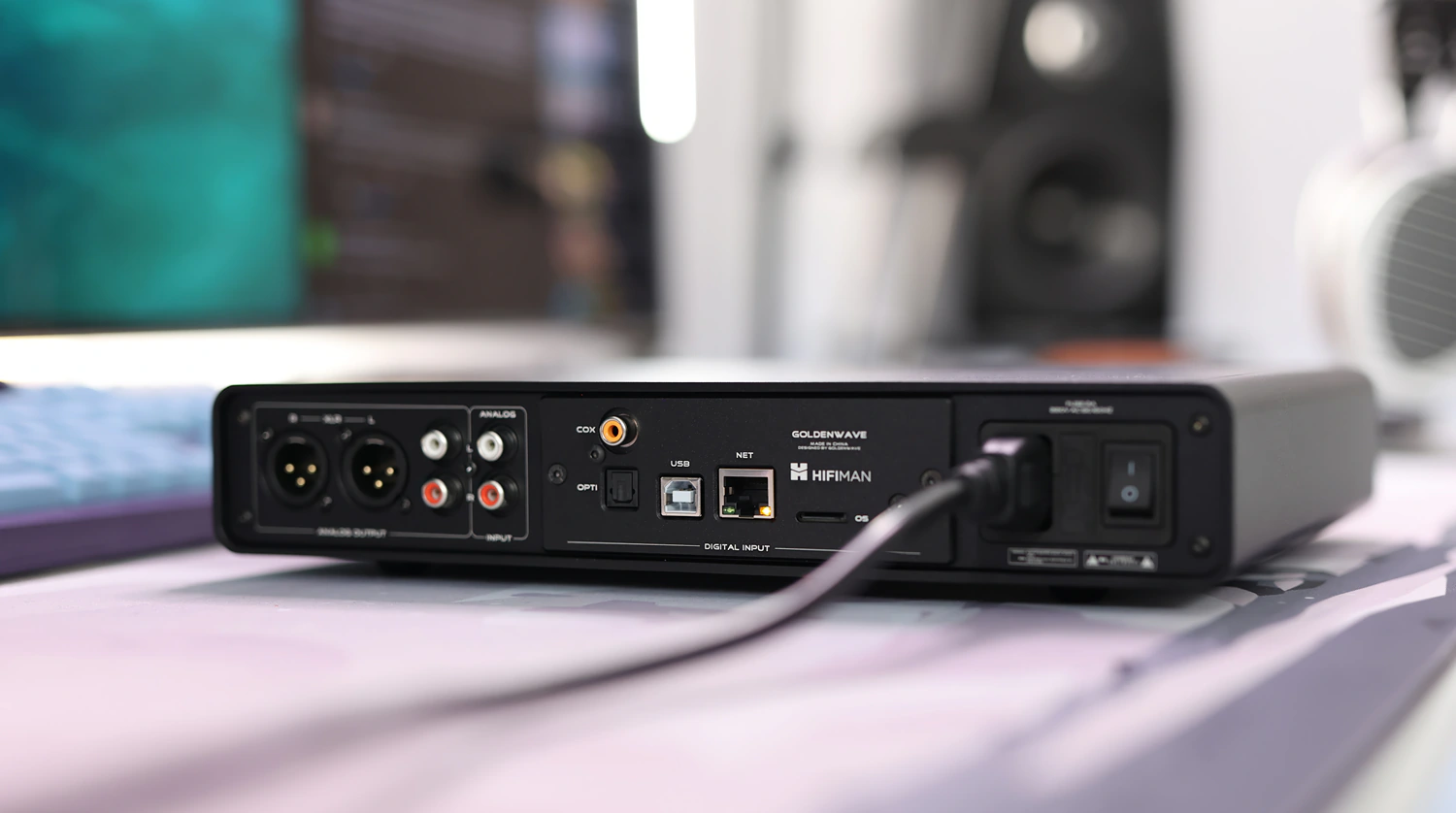
HIFIMAN serenade has perfect USB DAC usage, there is no USB DAC delay, and the start of each song is complete with no parts cut off, and no issues with Serenade using a proper gapless playback. Watching movies is excellent, no delay, dialogue happens in real time, and Serenade is adequate for gaming as well.
Sound Quality
Pairings – The main list of headphone I am using to test the Serenade include HIFIMAN HE1000SE, Audeze LCD-5, Kennerton Thror, Spirit Torino Super Leggera, Crosszone CZ-8a Enhanced, HIFIMAN Audivina, Sivga Peacock, and Underwood LSA HP-1. I have also paired the Sereande with a couple of IEMs, including Sennheiser IE900, Soundz Avant, FIR Audio e12 Electron, Letshuoer S15, Sivga Nightingale, Campfire Bonneville, Campfire Cascara, and Spirit Torino Twin Pulse Beryllium. For headphones, Serenade has an insane driving power, and even for HE1000SE, I can’t bring myself to turn the volume above half the maximum, it is simply awesome at powering them, with unbridled dynamics, power and punch. For IEMs, the sound is also excellent, there’s a bit of a high impedance hiss, and a quiet hum, which is audible at all volumes. This is easily drowned out with music playing, so even at very quiet listening levels you will not hear the noise floor, and the control is also good. The noise floor does not grow with volume, and it is always really quiet, audible mostly while no music is playing.
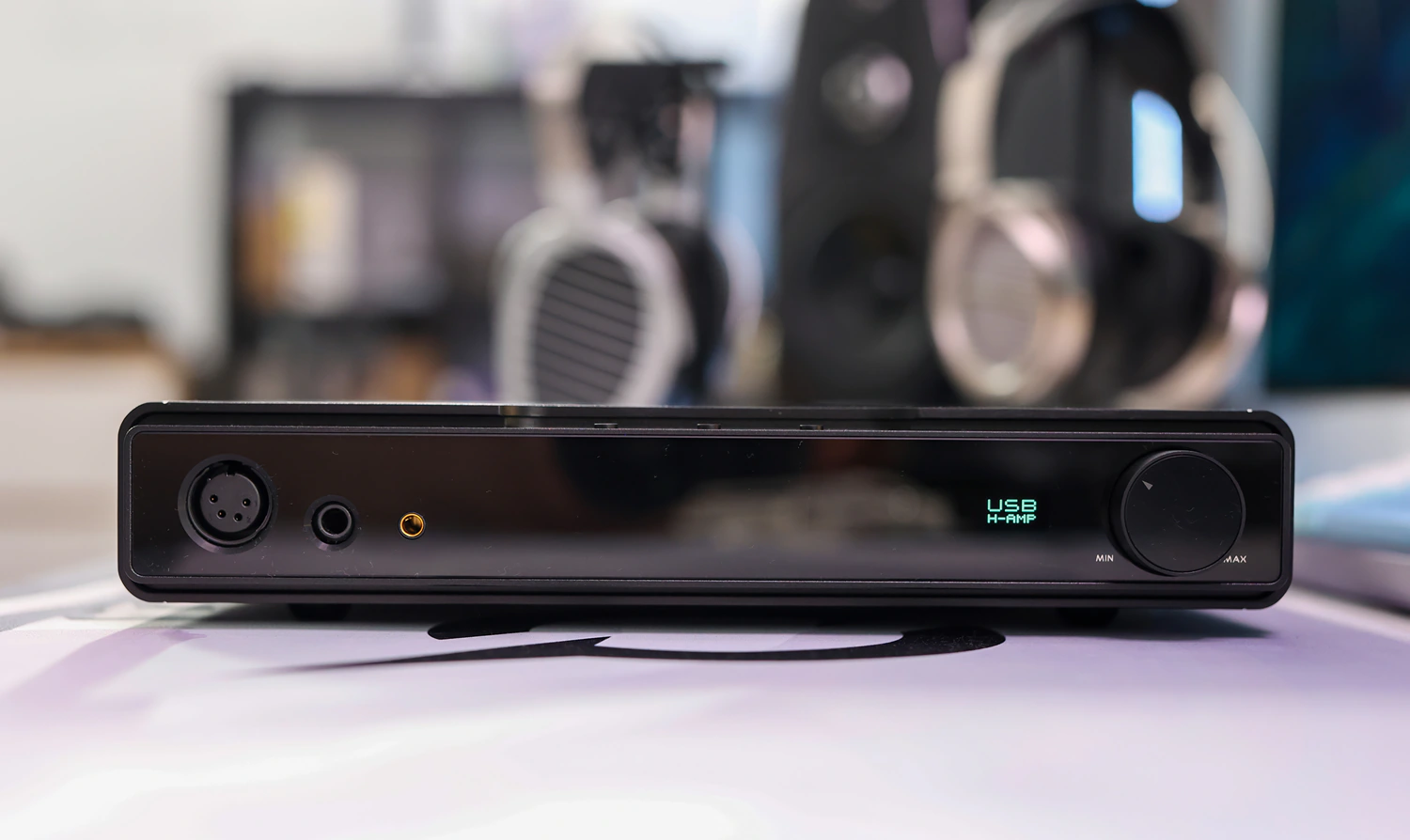
For speakers, I have set up Serenade as the main DAC driving Keces s300+ and the Pylon Audio Diamond 30 mkii speakers. As Keces s300+ is only an amplifier and has no volume control, there is a bit of gain hum quietly audible, so quiet and only present in perfect silence that most listeners would most likely never notice it unless they knew what to look for. I have paired up Serenade with other amplifiers too, and this is not audible with Burson Funk, SMSL AO200, or Cyrus One Cast. Serenade handles IEMS much better than most amplifiers with a similar level of driving power, so the noise is actually lower than most competition that offers a similar power level.
Overall Signature – There’s nothing better than a DAC/AMP which is almost entirely transparent, but can add a tiny bit of extra fun to sound, and that’s exactly what HIFIMAN Serenade delivers, transparency, with a bit of extra warmth, but an earth-shattering bass, voluptuous and full low-end, a musical and pleasing midrange, and a sharp, clean, and airy treble with a smooth texture, to make all music fluid, but clean, detailed and clear but avoid sounding grainy or fatiguing. The Soundstage is very wide, holographic, projecting sounds on all boundaries, both laterally and vertically, there’s an excellent sense of depth, and each special effect, even the forward elements in music are isolated much better than with most DAC/AMPs, Serenade conveys depth and separation, isolation and layering much better than anything I’ve heard, as fac as a DAC/AMP goes. The sound is a tiny bit different between headphones and IEMS, and between headphones, as with so much power all headphones attain a certain level of resolution, control and depth, you often don’t recognize them, for example HE1000SE can sound bright and grainy if underdriven, but it is buttery smooth in textures and balanced, deep and powerful sounding with the Serenade, while Ie900 sounds more balanced, but also has a higher drive to it with it.
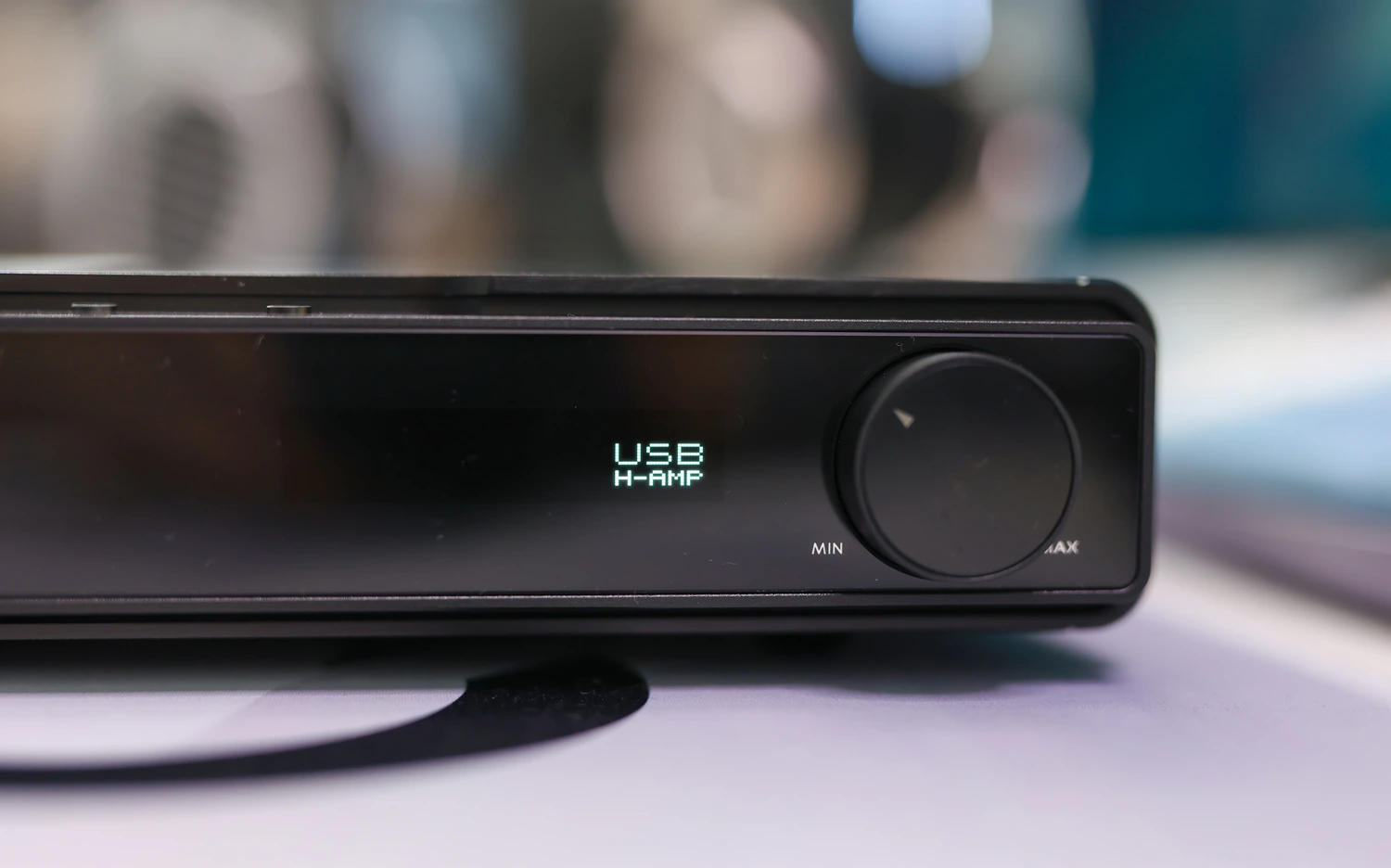
Bass – With driving power comes depth, as the saying usually goes, and Serenade shows this perfectly. The bass impact is out-of-this-world, even with headphones which typically can sound bright and downright flat when not powered properly. HIFIMAN HE1000SE is a great example, but so is Audeze LCD-5, which out of the Serenade can become bass cannons, especially with the right pop, edm or rap tracks. The control Serenade has is excellent, it can start or stop thunderous waves of bass at the drop of a pin, and this is especially fun to hear with EDM music, but also intriguing with jazz and classical, where you get a well defined nuance for each instrument, the different resonance point and reverberation of each material and instrument being highlighted perfectly.
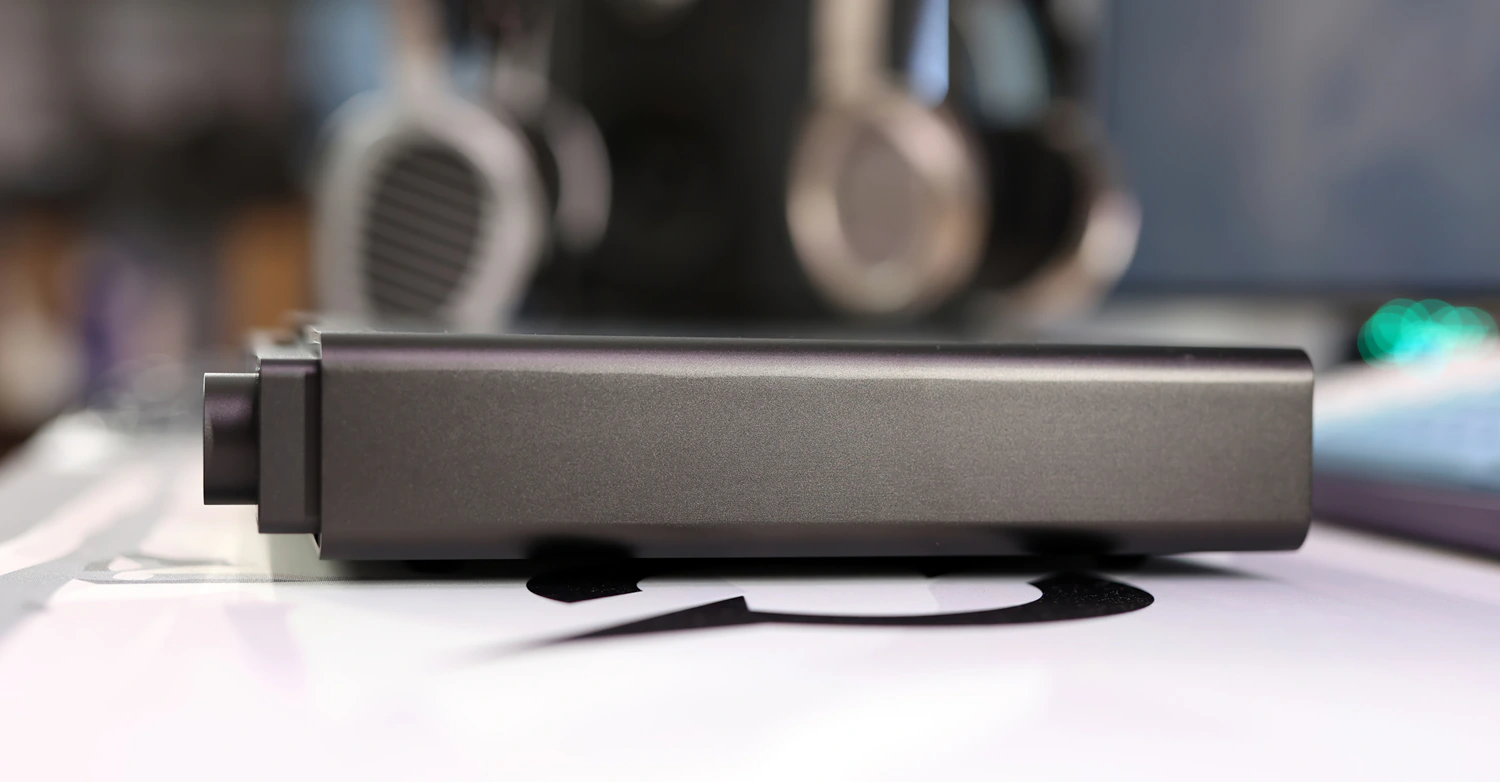
Especially at higher volumes, where weaker sources would struggle, Serenade shines more, packing more punch and impact into all headphones and IEMs I have paired with it. I would call the tuning of the bass slightly warm, there’s an euphoric resonance and undertone to bass which makes it a bit fuller and more pleasing than it would be at a dead neutral position, but it doesn’t add enough to name it a coloration of the sound. Fuzzy and slow bass is conveyed as well as technical and fast bass, and a great song to check both is Closure in Moscow – Neoprene Byzantine, where slow and huge bass guitar notes are vigorously intertwined with fast paced drums where the bass guitar picks up pace too. The lead voice is presented forward, a central element right in front of me, as a listener, while there are distant but well defined guitars playing far laterally, and the drums fill in the entire soundscape, with special effects extending far in the background and all across the soundstage.
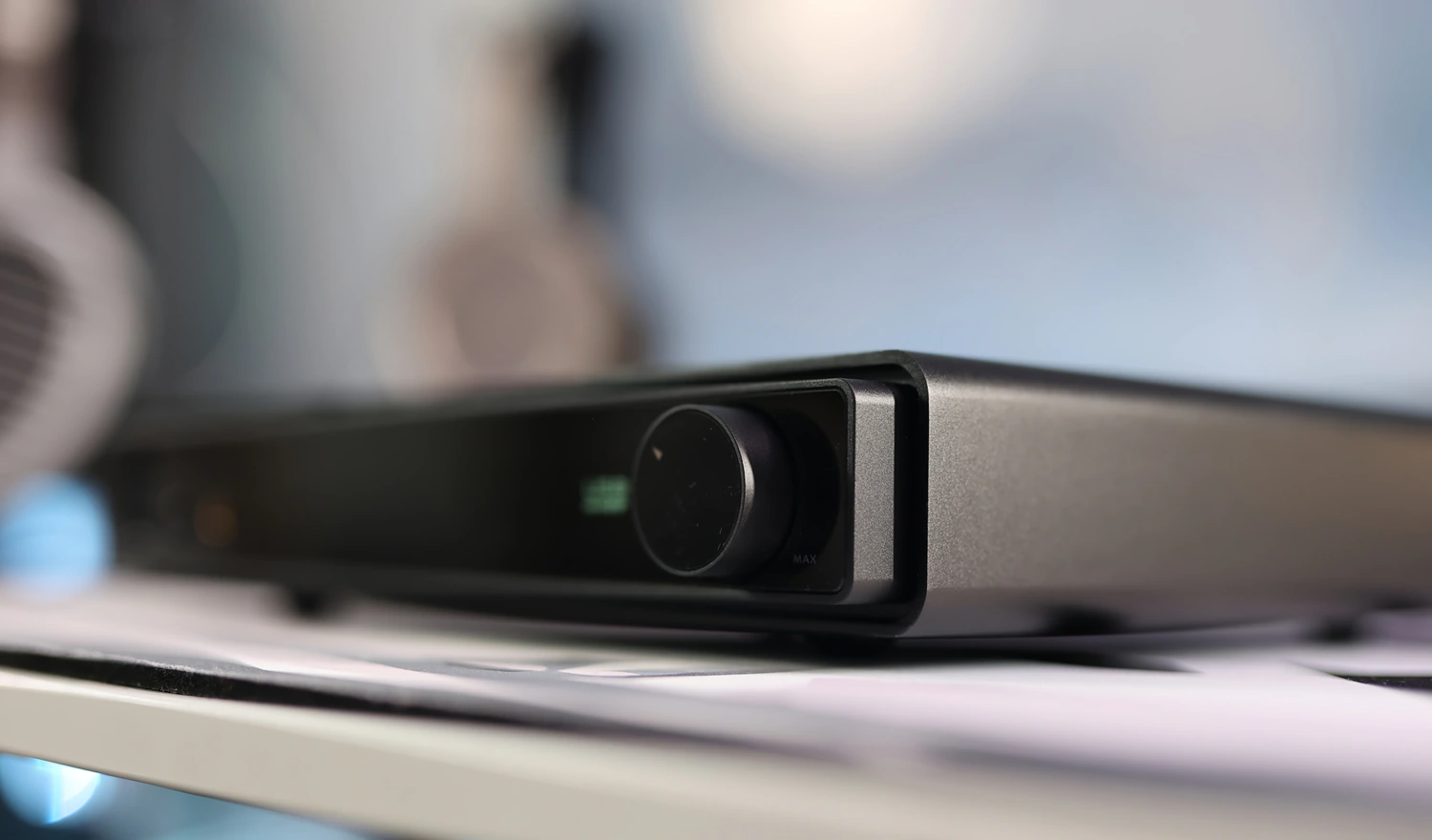
Midrange – There’s just a fine nuance of warmth added to an otherwise perfectly clean and transparent midrange, as Serenade has the power to control the drivers in all headphones, it creates a smooth texture with most headphones, but keeps intact all the resolution, dynamic range, and the micro details those have to offer in music. The hardest part to do for any source is help the speakers or the headphones actually paint a natural voicing with full control and no distortion, while keeping music fluid, but detailed, and here is where Serenade really shines. Guitars sound rich and bountiful, voices natural, and stringed instruments have the specific resonance of each instrument, including harps and violins sounding as you’d expect them to in nature. This stays true both when using Serenade as a DAC for a stereo system, but also when driving headphones, it conveys a really true-to-life sound. The lower to higher midrange ratio is perfect, and there’s no real favoritism, both a darker metal track and a happy pop song will sound equally pleasing and forward, and songs like Haggard – Chapter II: Upon Fallen Autumn Leaves blends the soprano voices perfectly with the deep and brash male voices during the metal segments of the song. Harp sounds are wooden and clean, well defined and separated from the voices, while guitars reverberate the whole stage with strength, still allowing chimes and pianos to be clearly audible in the layers behind. Serenade presents the songs as they are, and with a large library you will hear many different placement of lead instruments and voices, sometimes all instruments are pushed back, sometimes all of them are forward, and Serenade will present things as they are, transparent and honest with very little coloration and imposing nothing on the song that is being played.
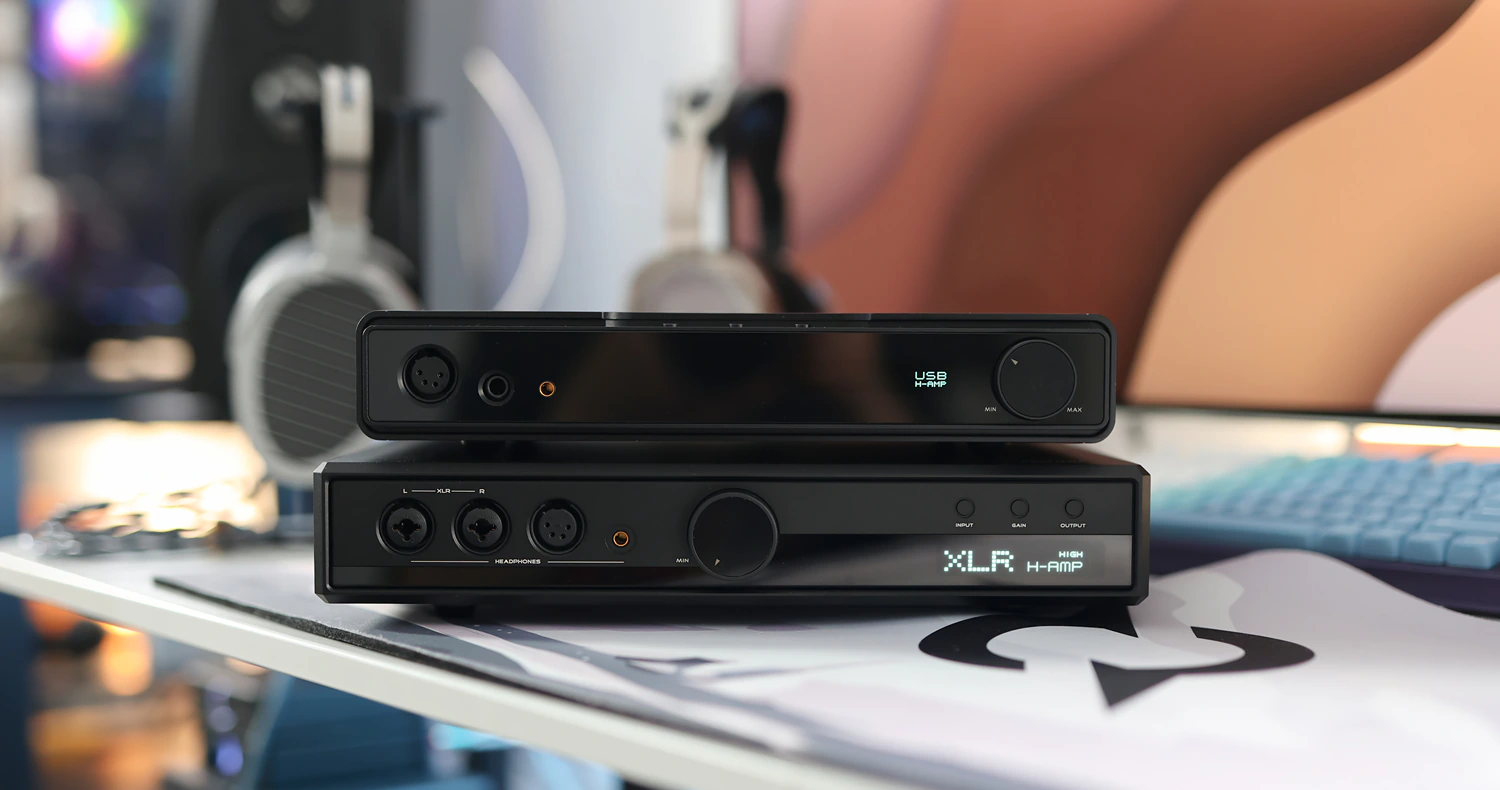
Dynamics / PRaT / Textures – The texture of the serenade is natural, it has a sharp and quick, snappy sound, not necessarily characteristic of the R2R DAC inside, but what is characteristic is that all textures are fluid and smooth, grain-free, while dynamics are quite a bit better than most competition offers around the price point. With a snappy impulse response, you can expect all sound to be clear, and while I found other R2R devices to sound really soft, HIFIMAN Serenade balances the magical smoothness of the R2R DAC with a powerful, clean and transparent impulse response, being what I would consider a perfect studio DAC, a perfect listening DAC, and doing an excellent job at revealing details and textures. While classical music, including large orchestra songs sound rich, bountiful and each instruments is easily audible, a good song to test the limits of textures is Mindless Self Indulgence – Kill You All In A Hip-Hop Rage, as the band blends very harsh square waves with classical elements, and a fast voicing, with fast drums. Serenade shows a really crisp but not fatiguing presentation of the synths and square waves, bringing the lead voices and guitars onto the frontal layers, while allowing all the other synths to play in the background, separated from an intermediate layer filled with multiple special effects and standard synth / piano keys. What is surprising is how smooth and pleasing the sound is, showing just why HIFIMAN decided to go with an R2R DAC chip for the Serenade.
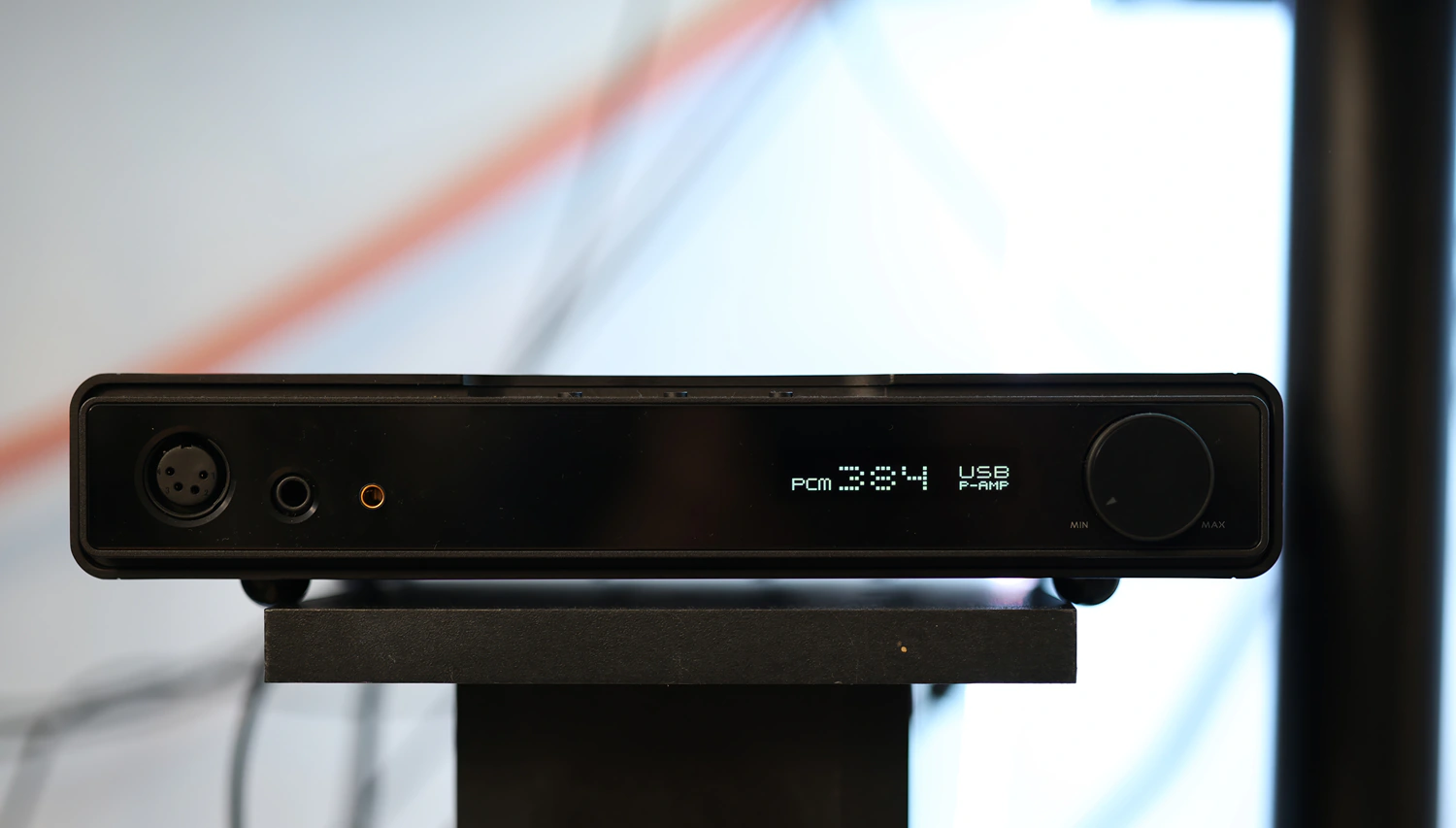
Soundstage – A wide soundstage, excellent stereo imaging, and strong layering are all things you will love about the Serenade, as it is able to literally show music at its widest, most expansive presentation possible, showing off just how holographic and wide a song can be. This crosses the bounds of what headphones do with other sources, especially HIFIMAN’s own HE1000SE, but separation between instruments is always top-notch, resulting in a really pleasing overall sound. Pianos can extend across all imaginable spaces around your head, and distant sounds can feel as if they are thrown from somewhere outside the room, which makes soundtracks for both games and movies especially engaging and pleasing.
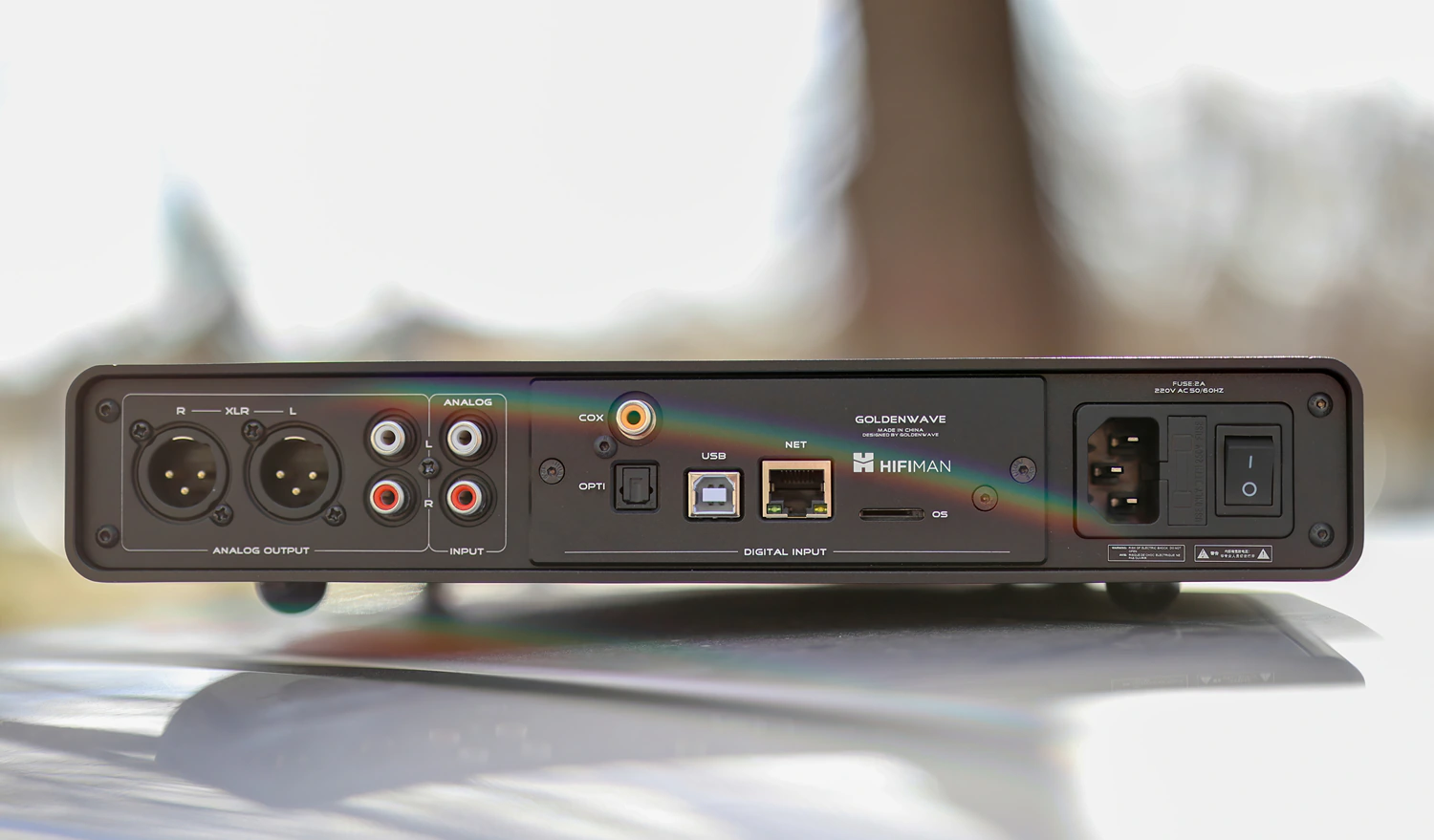
Volume Control – While most sources can struggle at low or high volumes, HIFIMAN serenade remains perfectly clean regardless of high you turn it. With no music playing there is that quiet hum and hissing with sensitive IEMs, or with AMPs that have no preamp function, but both of those are not audible while music is playing, and both are constant across all volumes, so unless you get the DAC/AMP to listen to silence, you won’t notice it during songs, even at really quiet volumes. Serenade sounds exactly the same at high and low volumes, the dynamics, clarity, resolution and soundstage size, instrument separation staying the same across all volumes. This shows perfect volume control and a crisp, clean sound even if brought insanely loud, or in pure silence, with music barely audible.
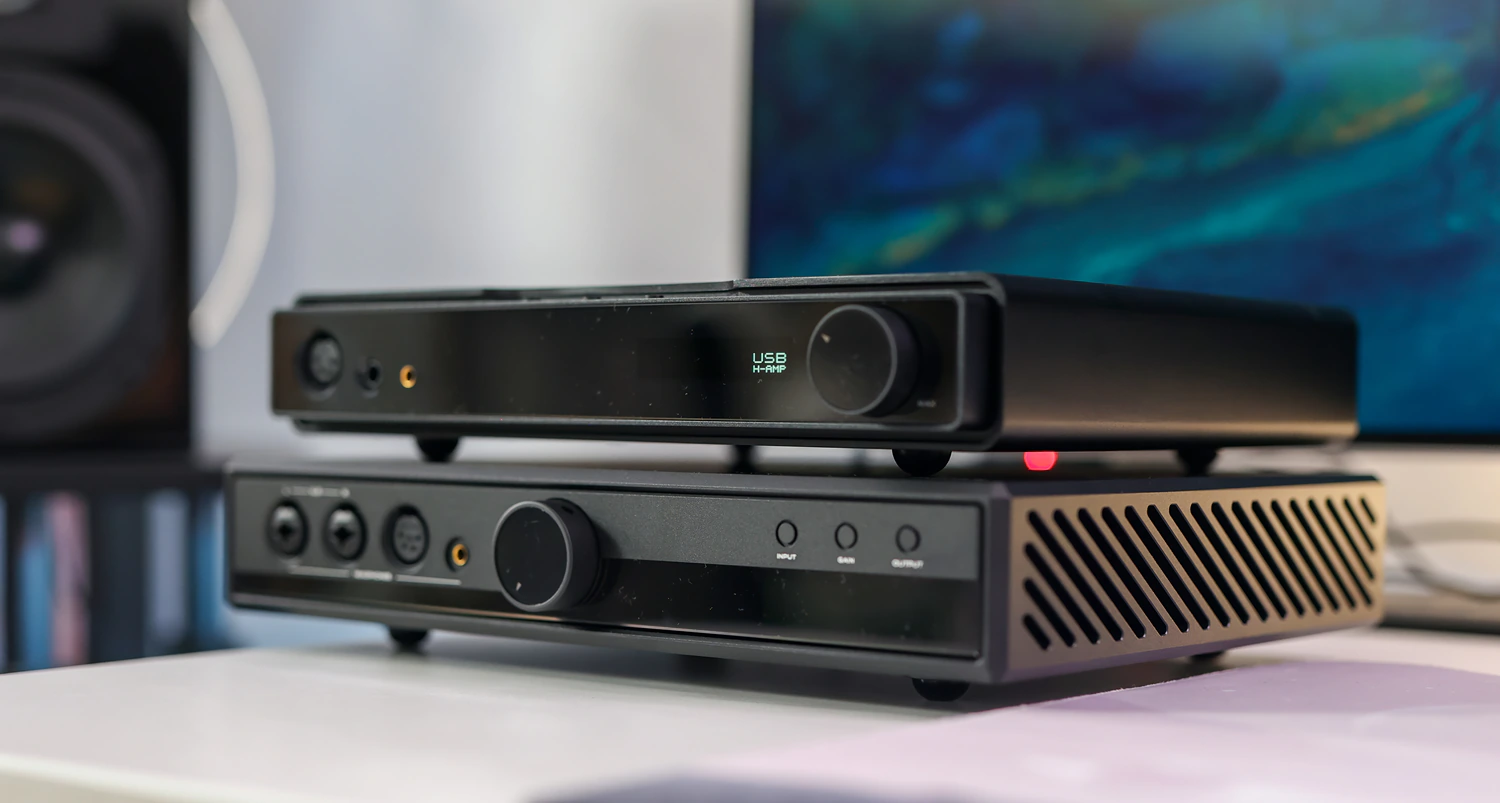
Treble – The texture of the treble of the Serenade is on the smoother side, characteristic of the R2R DAC chip, but don’t let this stop you from going to purchase it, because it has a brilliant, sharp and airy treble expression, with just the character of the treble kept in check, but with full expression and extension of the treble. You can experience the brightest shimmers of chimes, full spark and air from cymbal crashes, and when the song asks for it, the drums sound crisp and punchy, but they sound like properly tuned drums, never getting out of control. Songs from my favorite Treble torture band – Infant Annihilator, will sound bright and crisp, detailed and precise, but the blinding treble never gets fatiguing, it has a satisfying air and presence, without getting to be harsh even with really open sounding headphones like HE1000SE, so Serenade is delightful for offering an open sound, no roll-off, but a smoother texture, enough to keep it all fun. Transparency with an R2R nuance to it is key here, the R2R DAC has a much higher resolution and impact than what I’ve heard in the past, showing what I would consider to be a more cohesive experience, and a really pleasing presentation of all instruments.
Gaming
There are multiple facets of a device, be it DAC / AMP or even headphone / speaker setup that make it better or worse for gaming, so starting today we are adding a dedicated segment to our reviews exploring the gaming abilities of each product we review, especially as based on popular demand, dedicated gamers love to rock on some flagship headphones, and DAC/AMPs.
HIFIMAN Serenade is quite awesome for gaming, for multiple reasons, starting with its excellent USB DAC implementation, which has a zero delay, so you will hear sounds as they are happening in real time. This includes your enemies approaching you, and thanks to the excellent stereo separation and imaging, you will hear it all in a precise image, bad actors will have trouble sneaking up on you if you hear them easily. Even better, as Serenade is both a DAC/AMP and a full sized DAC for speakers, it can power multiple devices, and drive basically any pair of headphones and IEMs, so for gaming it is perfect as it allows you have a clutter-free setup, and it has outputs for all headphones and IEMs, including 4.4mm, XLR, and 6.3mm Jacks, plus RCA and XLR outputs at the back.
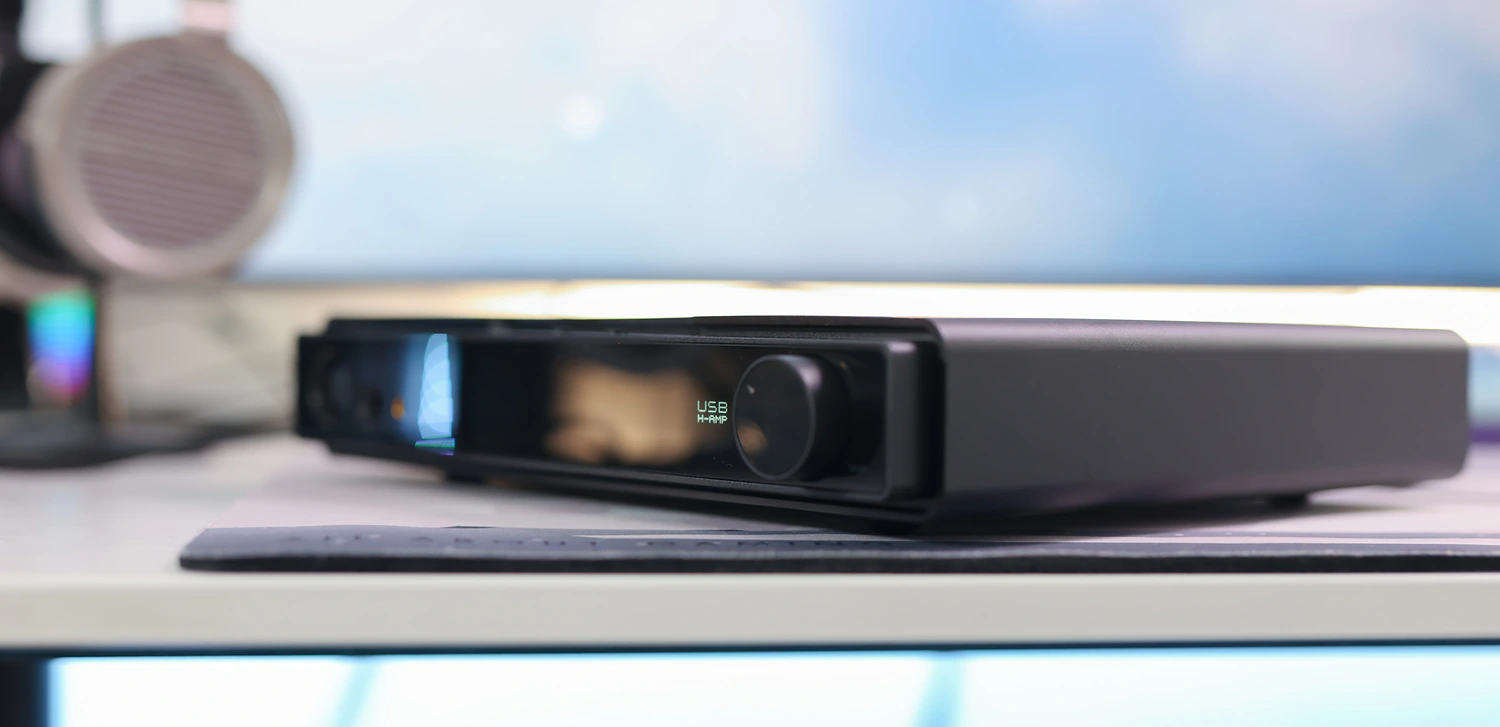
There is no driver or software needed to use the Serenade, so it should work well with most platforms too, although I have not tested xbox and playstation compatibility yet. This being said, there should be no issues, especially as Serenade has multiple inputs, including Optical and Coaxial, so even there will always be a way to get sound from your source to it to play well, all with no delay and proper stereo placement.
Comparisons
HIFIMAN Serenade vs FiiO K9 PRO ESS (999 USD vs 849 USD)
Build – From my photos it is not right away obvious, but K9 PRO eSS has XLR, 4.4mm balanced and even 6.3mm single ended outputs, just like HIFIMAN Serenade. There are more USB inputs on K9 PRO, with a Type-C USB input on the right side of the DAC/AMP, and it has more gain levels, plus a Bluetooth antenna, although Serenade has Ethernet input, which should prove to be more useful along the way, considering the price point of both. There is a 4.4mm balanced input on FiiO K9 PRO ESS, but otherwise, the input and output list is similar to the Serenade. The maximum driving power is far higher on the Serenade and it handles both IEMS with a slightly lower background noise level, and hard to drive headphones with more control, while the DAC and OP-AMP selection on the Serenade is a more unique selection of components.
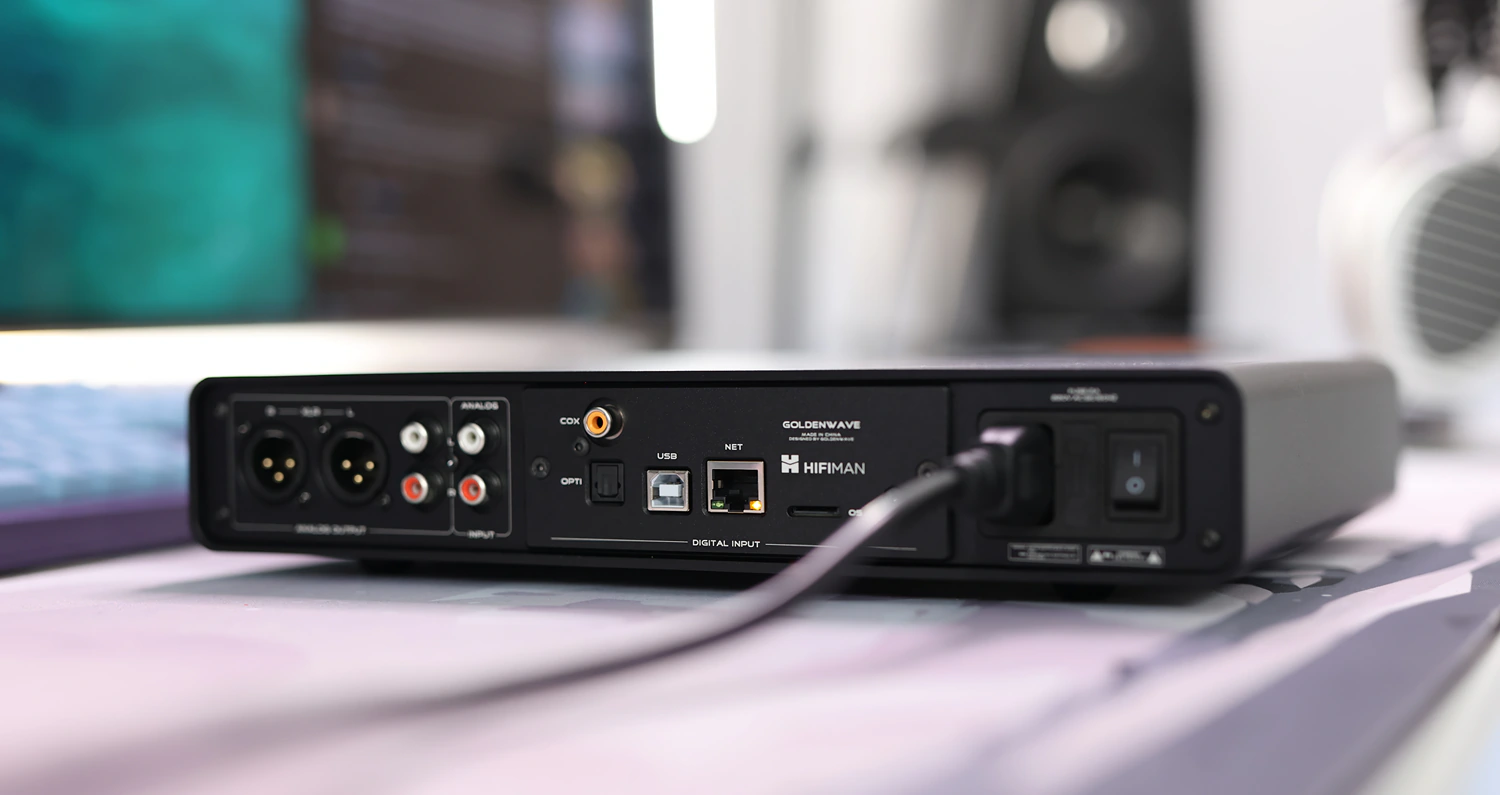
Sound – Sonically, FiiO has an uncharacteristic sound for the company, K9 PRO ESS is one of the flattest sounding DAC/AMPs I’ve heard, it brings everything to you, but presents music with all its good and bad sides, and can make music really edgy, like the ESS DAC is always spoken about to have the sound like, while Serenade sounds much deeper, with more bass, a much higher dynamic range, more detail and resolution, wider soundstage, and a smoother treble, along with a more fluid sound and less edginess. For studio work, K9 PRO ESS will be a bit more honest whether the sound is harsh and sharp, but for listening to music, HIFIMAN Serenade makes music more vivid and more fluid, taking away the fatiguing elements, giving everything a beauty filter.
HIFIMAN Serenade vs Keces S3 (999 USD vs 1300 USD)
Build – Keces S3 is quite a bit taller than the Serenade, while the display of the Serenade is a bit larger and easier to read. Both S3 and serenade have a large volume wheel, and both have multiple headphone outputs, but with Serenade you have 4.4mm balanced and XLR Balanced headphone outputs, while Keces S3 has only XLR and 6.3mm single ended outputs. This being said, S3 has no pure DAC function, like Serenade, but it does have a gain selector, allowing for more volume control with more sensitive headphones and IEMs. The input list for S3 is richer on the analogic side, as it has XLR inputs, not just RCA, but otherwise it also has XLR and RCA analog outputs like Serenade. The inputs of S3 are fewer in number, and it gets the basics right, with USB, Coaxial and Optical inputs, but Serenade adds Ethernet, which opens up the usage for it quite a bit. Both DAC/AMPs have good driving power, and both can deal with headphones and IEMS equally well, although the maximum driving power of the Serenade is a bit higher.
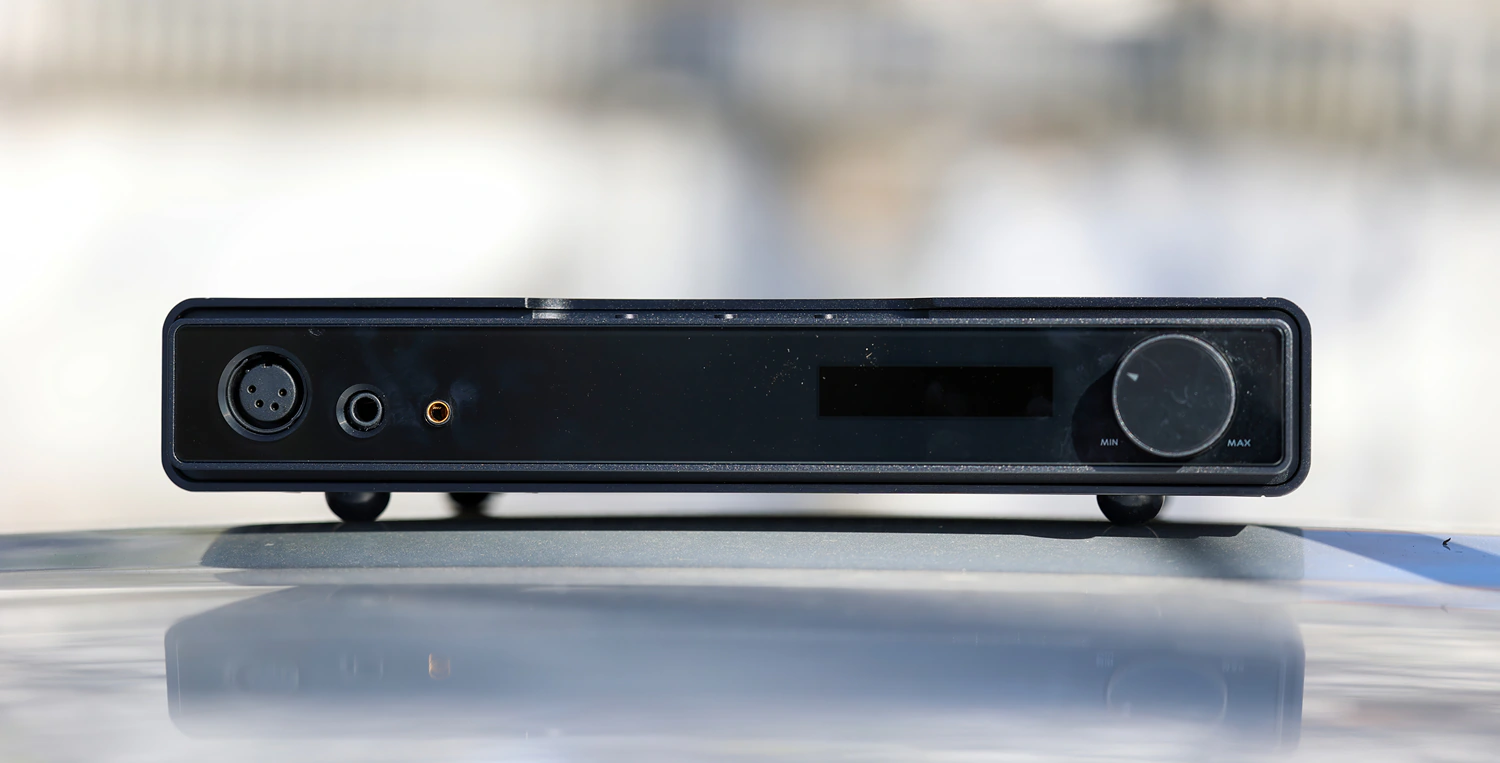
Sound – You likely won’t ever reach the maximum driving power of either DAC/AMP, but you will easily notice the differences in the tuning, as HIFIMAN Serenade is a slightly softer, slightly warmer and slightly more dynamic and fluid sounding DAC/AMP, while Keces S3 has a hard sound, with much less bass, more treble, sounding sharper and brighter, while Serenade sounds fuller, deeper and creates a more realistic body for instruments. Both DAC/AMPs extract details from music really nicely, Serenade separates the background layers a bit better, while both project music on the lateral plane equally nicely. Keces S3 could be said to pair better with really dark sounding headphones, as it is brighter, but Serenade sounds deeper and can put more kick into both hard to drive and easy to drive headphones, and create more separation between instruments along with revealing more dynamics, all while sounding smoother in textures and less fatiguing.
HIFIMAN Serenade vs Aune S9c PRO (999 USD vs 699 USD)
Build – Aune S9C PRO has long been a favorite for both readers and for me personally, and although the S17 PRO from Aune is known to get quite hot, that has not been a problem with S9c PRO, so it is a good idea to start by saying that HIFIMAN serenade stays even cooler than S9C PRO or S17 PRO and cooler than most DAC/AMPs even if you leave it turned on for an entire night, with other devices stacked onto it. Out of all the comparisons we are making today, S9c PRO is one of the few DAC/AMPs which has as many inputs and outputs as HIFIMAN Serenade, if not actually matching it one by one. Actually, S9C PRO has the bonus of an extra AES Ebu XLR input, but it does not have an audio RCA input, otherwise both units have all your favorite ins and outs. There is no USB DAC delay with either and both are suited for real-time video playback and gaming, both units have a mini display, but the display of S9C PRO is larger. The volume wheel is large and has good damping for the Serenade but it is a digital clicky controller for Aune S9c pro, offering a digital volume meter on the display, When driving hard to drive headphones, HIFIMAN Serenade has a higher driving power, more control, and generally offers better sonic performance, both units having a fairly similar noise level with very sensitive IEMs. The noise floor of both is very quickly forgotten about once music is playing and you don’t leave them playing silence.
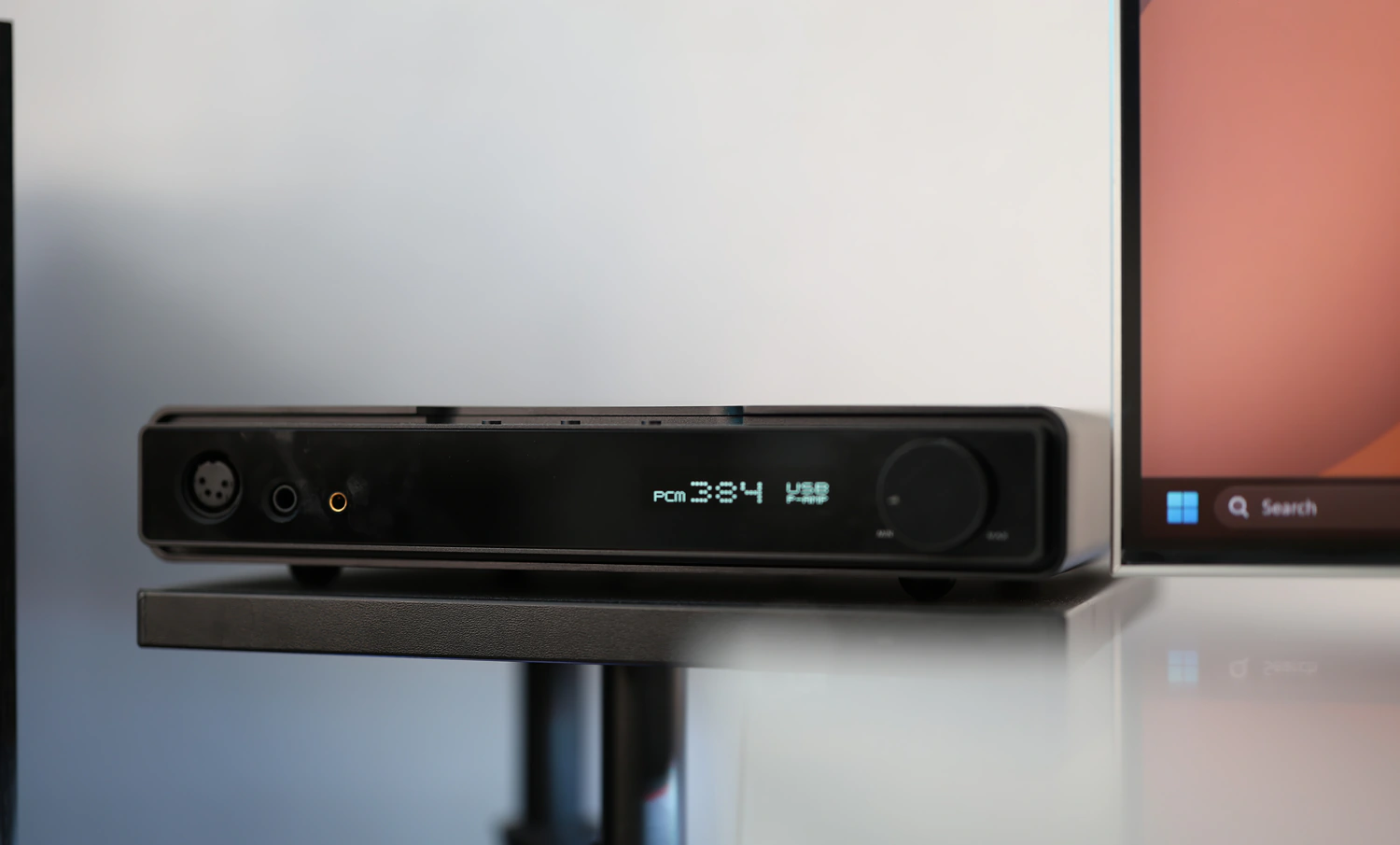
Sound – Sonically, I actually like both, Serenade being a more vivid, wider, and more holographic listening experience, while S9c working to be a similar sounding DAC/AMP but a slightly minified version of the same tuning. The bass of the Serenade is much deeper, bigger, punchier and more powerful, while the bass of S9C is present but fairly neutral and not quite as bountiful as that of the Serenade. The midrange of Serenade is more musical, has less grain and that R2R DAC being put to work really has a specific sound to it, and this time around an impactful and revealing sound, not a soft sound as we’ve seen with Denafrips Ares II. The treble of the Serenade and Aune S9c PRO sounds brilliant, sharp and revealing for both, but Serenade has a smoother treble, while S9C PRO sounds a bit more grainy, although I would not call it grainy if hearing it alone. The soundstage of the Serenade is wider, more holographic, the instrument separation is higher, the sound is more vivid and better defined. Between the two, the sound is similar, but Serenade has a higher driving power for hard to drive headphones, Aune S9c PRO has a bit more volume variation for IEMs, and it is a bit more affordable, I would pick the one that better suits your needs.
HIFIMAN Serenade vs Detonray Listening M1 (999 USD vs 2599 USD)
Build – M1 is considerably smaller and lighter than Serenade, but the power delivery part is on the outside of the DAC/AMP rather than being a Toroidal Transformer as it is in Serenade. Both have a USB DAC function, both have zero delay, and both have Coax input, but Serenade has Optical too, while M1 has Type-C USB input. Both DAC/AMPs can and will handle hi-res files perfectly, and both have a balanced headphone output. HIFIMAN serenade has a Balanced XLR Line Out, with Preamp function, and M1 has Preamp function too, but it only has RCA Line Outs. You can set the gain on M1, while that is not possible on Serenade, and both use an analog volume wheel, which has high damping for both units. For very sensitive IEMs, there is a quieter background noise with M1, but Serenade has a higher driving power at maximum and can handle certain hard to drive headphones better. Both DAC/AMPs handle most headphones and IEMS I have really well, and both work well with my computer, although the biggest design difference is in the size and shape of each, Serenade is a classic Hifi unit with large shape, the Power Deliver inside, while M1 is a much more compact unit with a power brick.
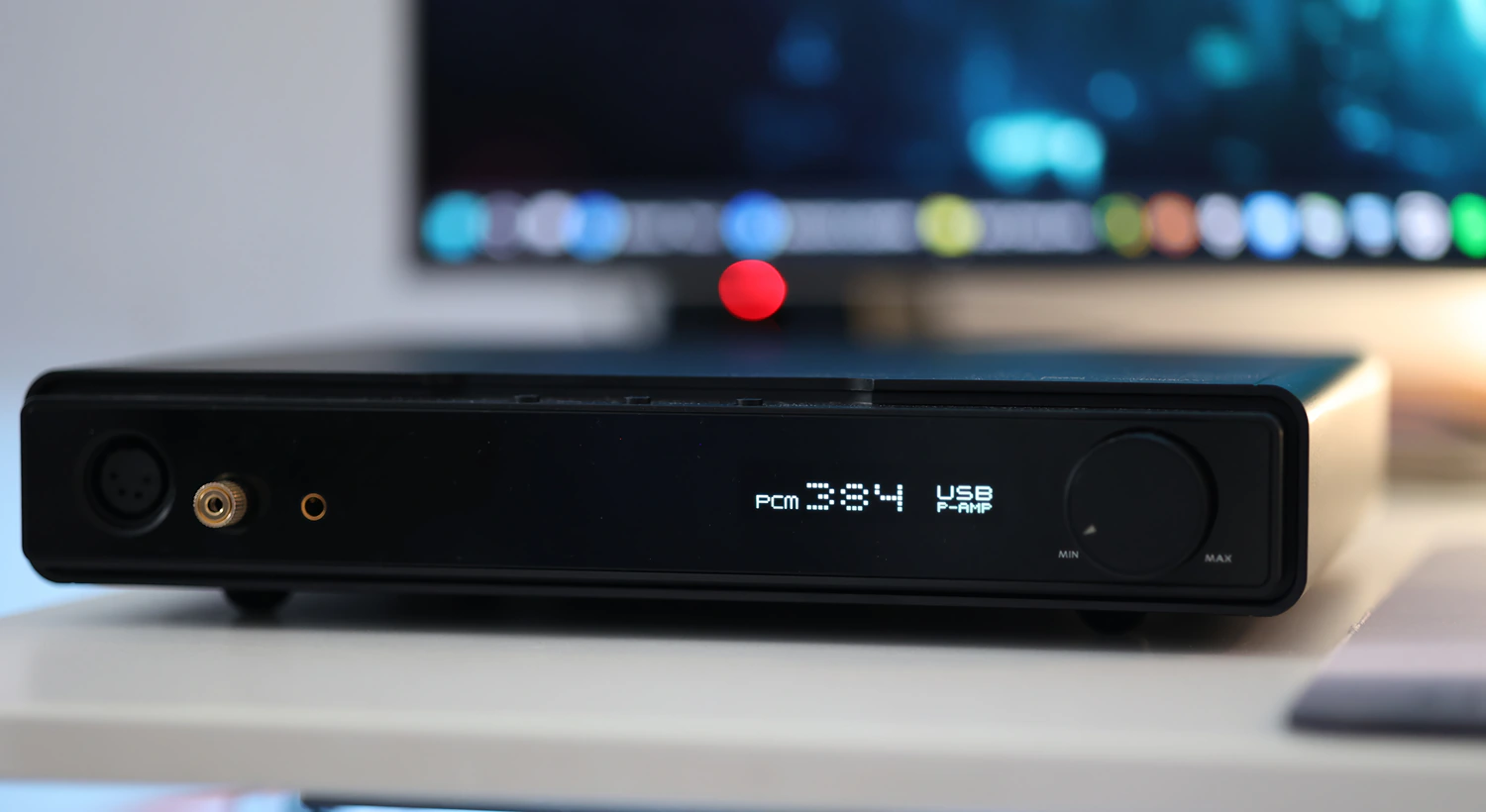
Sound – Sonically, M1 is the thicker, warmer and smoother sounding unit, and it has a deeper, more lush bass, and a smoother treble than the Serenade. Both have a high impact, and both have a clean midrange, Serenade presenting music with a more natural and neutral tonality, while Listening M1 creates what I consider to be a truly warm, lush and bassy presentation, with a really smooth treble. Taking away the sharpness and treble brilliance of Serenade might be useful if you mainly use bright sounding IEMs and Headphones, so for anyone who really wants a lower amount of treble, M1 might be the perfect solution, but Serenade is better if you’re looking for a balanced, natural sound and want the sound to have all its basic components in reasonable amounts. Both DAC/AMPs have a grain-free sound, but M1 sounds more intimate and brings everything closer to the listener, while HIFIMAN Serenade projects and expands the sound, gives music width, depth, more separation, more layering and a higher degree of spatiality, plus higher stereo separation and a better imaging. Between the two, I would pick the Serenade for a holographic, natural, impactful and delightful music experience, and pick M1 for a really warm, lush, dark, deep, and intimate listening experience, each being aimed at a different customer who is looking for a different tuning.
HIFIMAN Serenade vs HIFIMAN EF600 (999 USD vs 799 USD)
Build – Both HIFIMAN DAC/AMPs are well made, but EF600 has an industrial, practical design, being able to double as a headphone stand, while Serenade feels more refined, looks cleaner and has a more elegant design language applied all over. Both DAC/AMPs have both headphone outputs and line outs, but EF600 can only work as a DAC, with no preamplifier function, so the DAC always outputs the signal at full volume, while Serenade has volume control for the line outs. Both can drive headphones and IEMS, but Serenade has a much lower noise floor with sensitive IEMs, and while neither isn’t designed for IEMs, Serenade can be used that way just fine. The volume control on the Serenade is finer, and it allows for finer adjustments, plus the wheel has a higher damping effect, so it is harder to turn, both DAC/AMPs have excellent channel matching at low volume, and both get loud fast, given the high driving power of each.
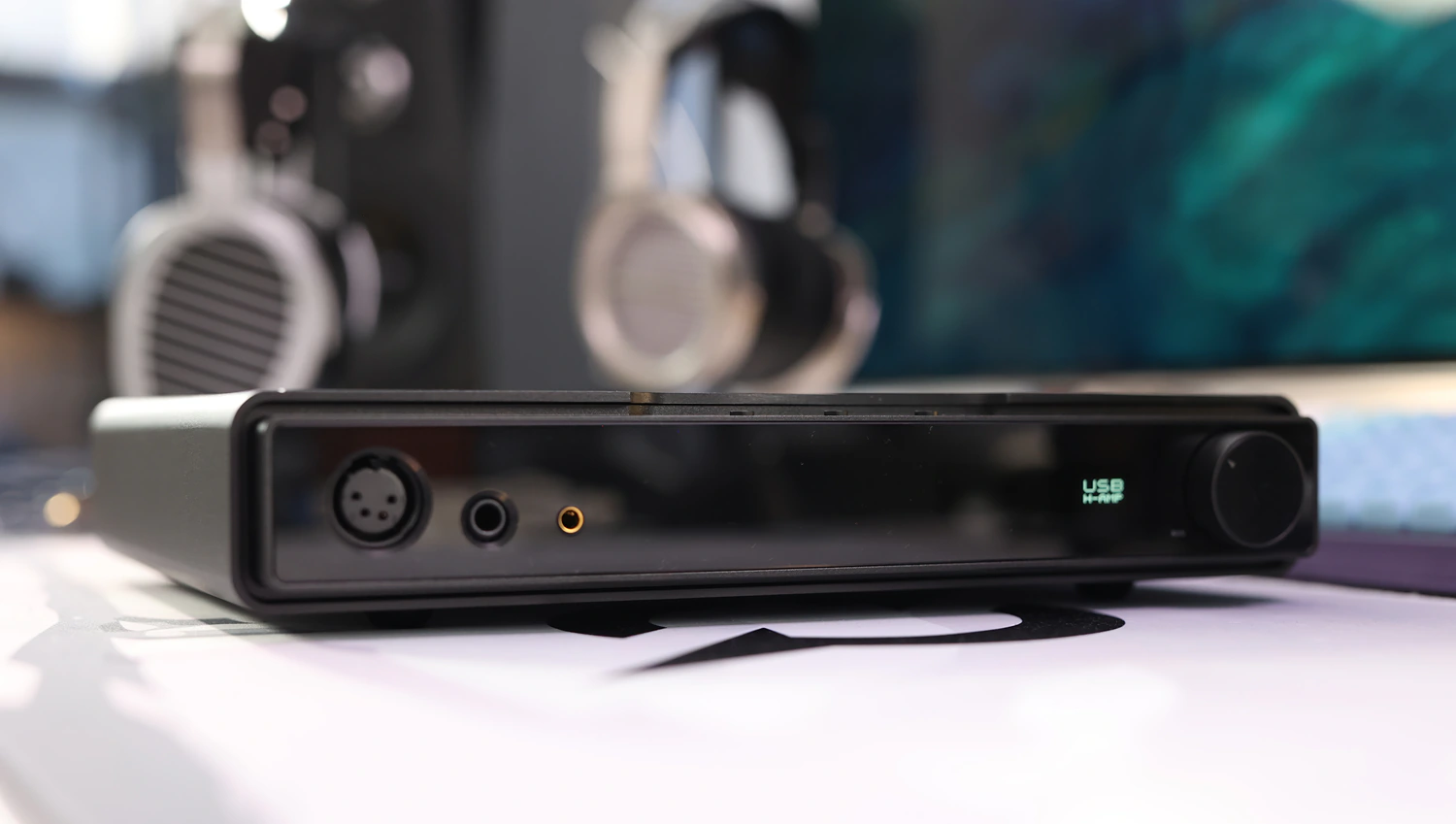
Sound – Sonically, EF600 is more neutral, has less bass emphasis and sounds more overdriven, at the same time it sounds more forward and more aggressive. The new Serenade sounds more refined, smoother and fuller, with a higher bass quantity, more impact, lower distortion, and a cleaner, more musical midrange. The treble of the Serenade is cleaner, a bit more brilliant and sharper, but still the texture is less grainy and smoother, creating a more pleasing sound that’s easier to engage with and listen to. EF600 is more critical of the source material, while Serenade makes all source materials sound great, it makes music fluid and appealing, and the price is just a tiny bit higher, so generally I would grab a Serenade, unless you’re really into the design and shape of EF600.
Value and Conclusion
For the price of 999 USD, HIFIMAN managed to pack a complete listening solution, with a uniquely vivid and dynamic sound, plus all the functions you can need from a complete DAC/AMP. Serenade is one of the most efficient DAC/AMPs in terms of price / performance, it has the actual backbone to drive most headphones, it has no noise with IEMs, and looks pretty too. The XLR outputs accompanied by the RCA outputs, which can have variable volume (preamp function) really add to how much fun owning and using the Serenade is. Considering the fact that it has Optical, Coaxial, USB, Analogic and Network inputs, Serenade has you covered regardless of how you like to enjoy music, or even games.
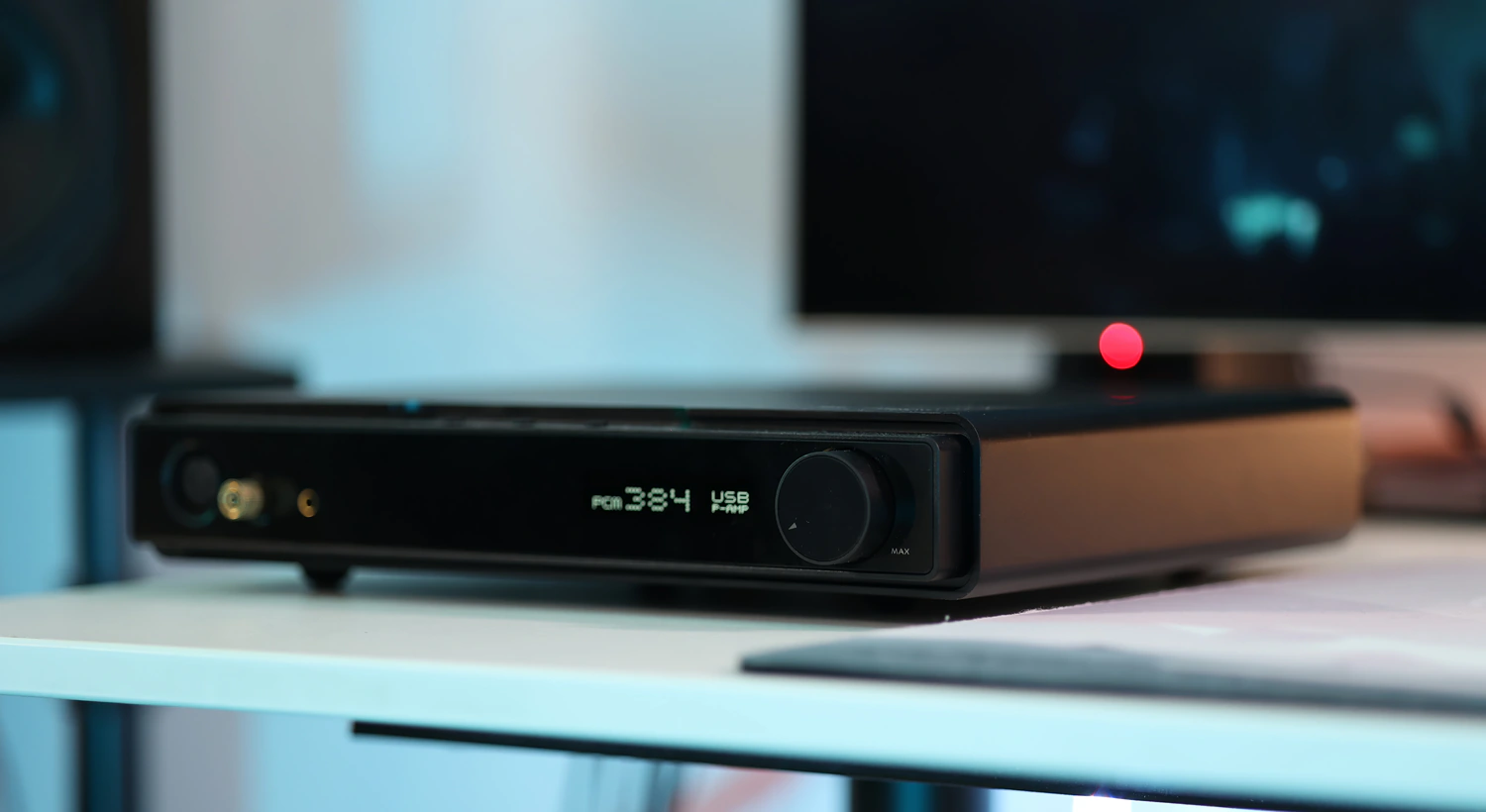
Before the end of the day, HIFIMAN Serenade feels and sounds the most complete out of the HIFIMAN DAC/AMPs I tested to date, and it deserves a place in the Hall Of Fame, the page with the best products I tested to date, it simply delivers on all fronts and doesn’t break the bank for its complex functionality.
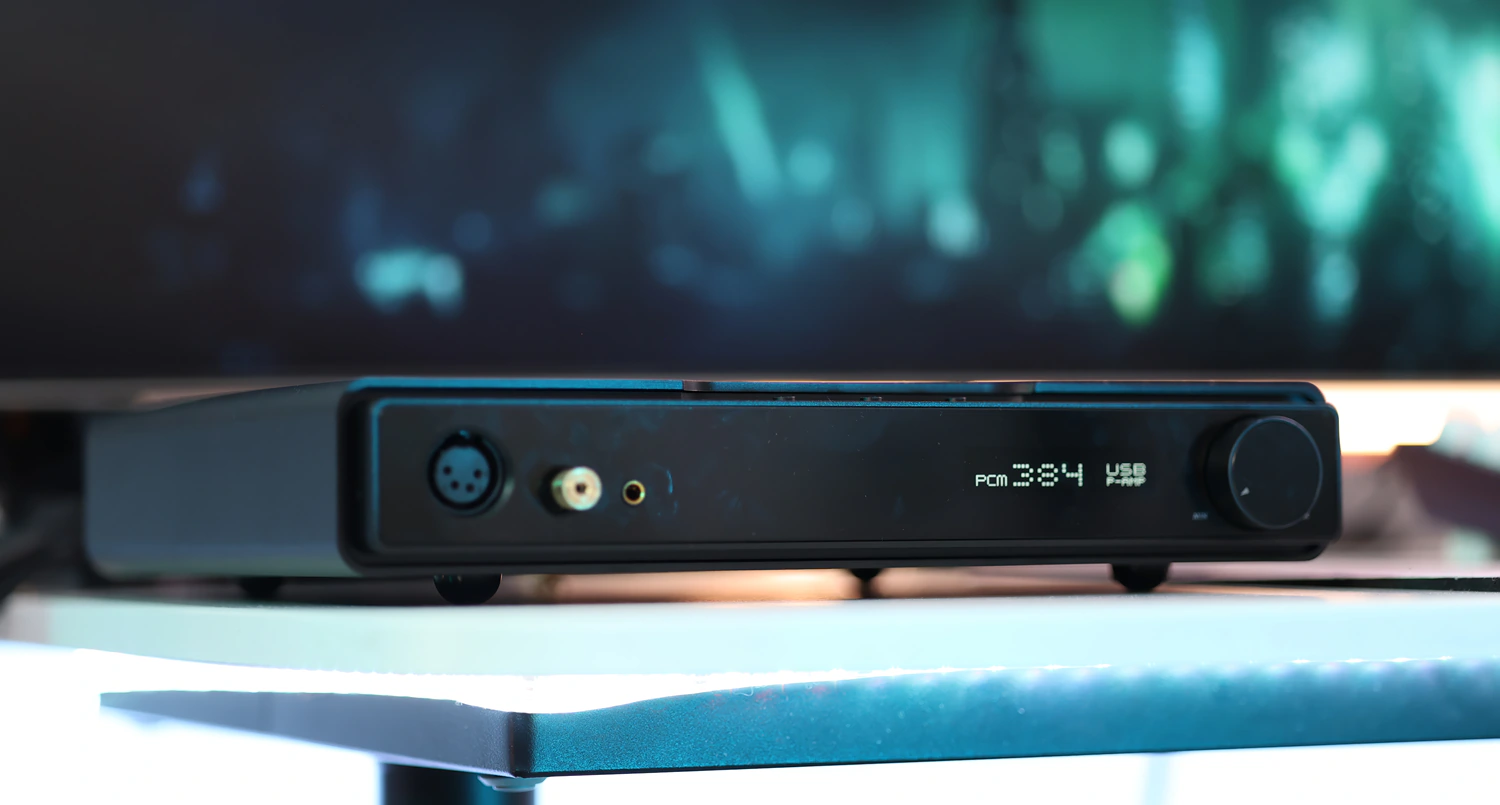
At the end of the day, if you’re looking for one DAC/AMP to drive all of your headphones and IEMs, to have a warm, pleasing sound, with the R2R characteristic cohesiveness in tuning, and if you’re looking for the superb design HIFIMAN now has, plus great XLR and RCA outputs, along with a multitude of inputs, HIFIMAN Serenade is one of the best I’ve seen and a complete music listening solution you can purchase and enjoy today.
Product Link
You can grab one here – https://amzn.to/3XkgZBB
--- Please remember to stay safe, and always have fun while listening to music!---
- If you have a dime to spare, please donate, and help us! It would make the day brighter for me and my wife-
Full Playlist used for this review
We listened to more songs than those named in this playlist, but those are excellent for identifying a sonic signature. I recommend trying most of the songs from this playlist, especially if you’re searching for new music! The playlists are different for Spotify, Tidal and Youtube, and based on the songs I enjoy and are available on each!
https://www.youtube.com/playlist?list=PL_cjBXGmwSHSdGcwuc_bKbBDGHL4QvYBu
https://open.spotify.com/playlist/5J3oloz8Riy9LxEGenOjQ0?si=979ba4f082414be7
https://tidal.com/browse/playlist/330fd544-8e5b-4839-bd35-676b2edbb3d5
--- Contact Us ---






Hi George, out of the Hifiman Serenade and Ibasso D16/PB5, which setup worked better for music, soundstage and gaming?
Hii, they are very different solutions, soundstage in particular is wider on the Serenade. But D16 with PB5 costs much more, and also has a the tube effect from PB5, so it will have a really different sound.
Hi George! have been really enjoying your reviews, helped me buy a smsl do400 a while back! I’m looking to now upgrade and deciding between a few, particularly this hifiman seranade and the Aune s17 pro. what would your comparison be between these, I can get both for roughly the same price, the s17 is cheaper which allows for a DAC also to keep the comparison fair
Hii, if you get the altest version of the Serenade, it will have more impact, better resolution and generally higher driving power than S17 PRO. But S17 PRO does better with IEMS and In-Ear monitors, it has better control overall, and is a bit warmer / smoother. Both are great, Sereande quite a bit better if you get the latest version with the upgraded Hymalaya DAC that has no background noise